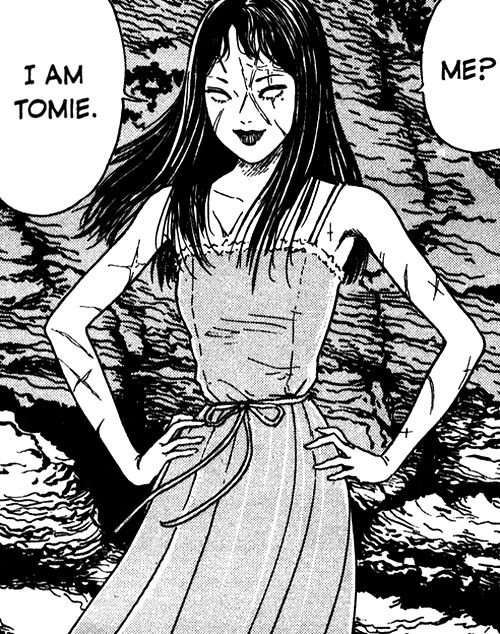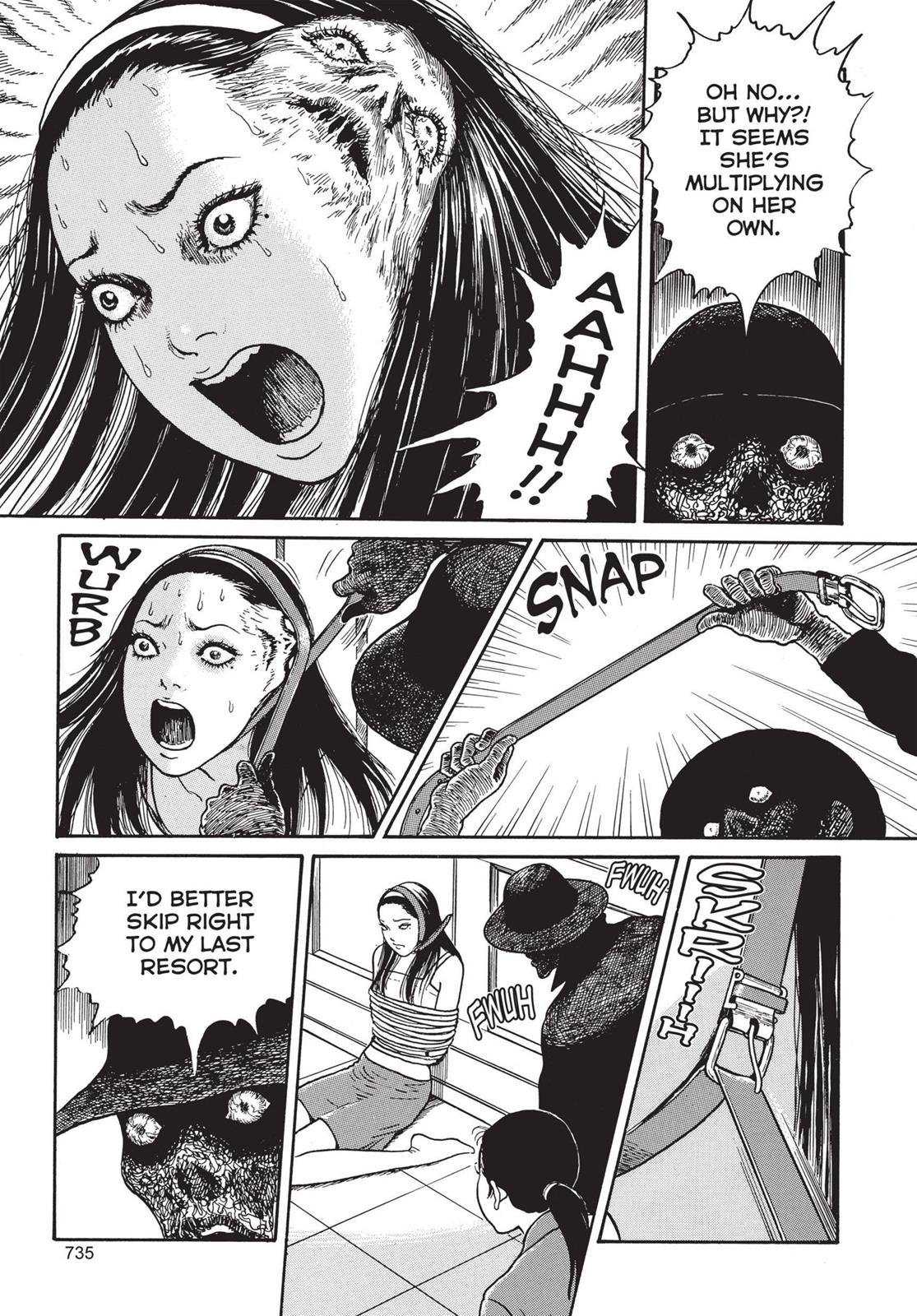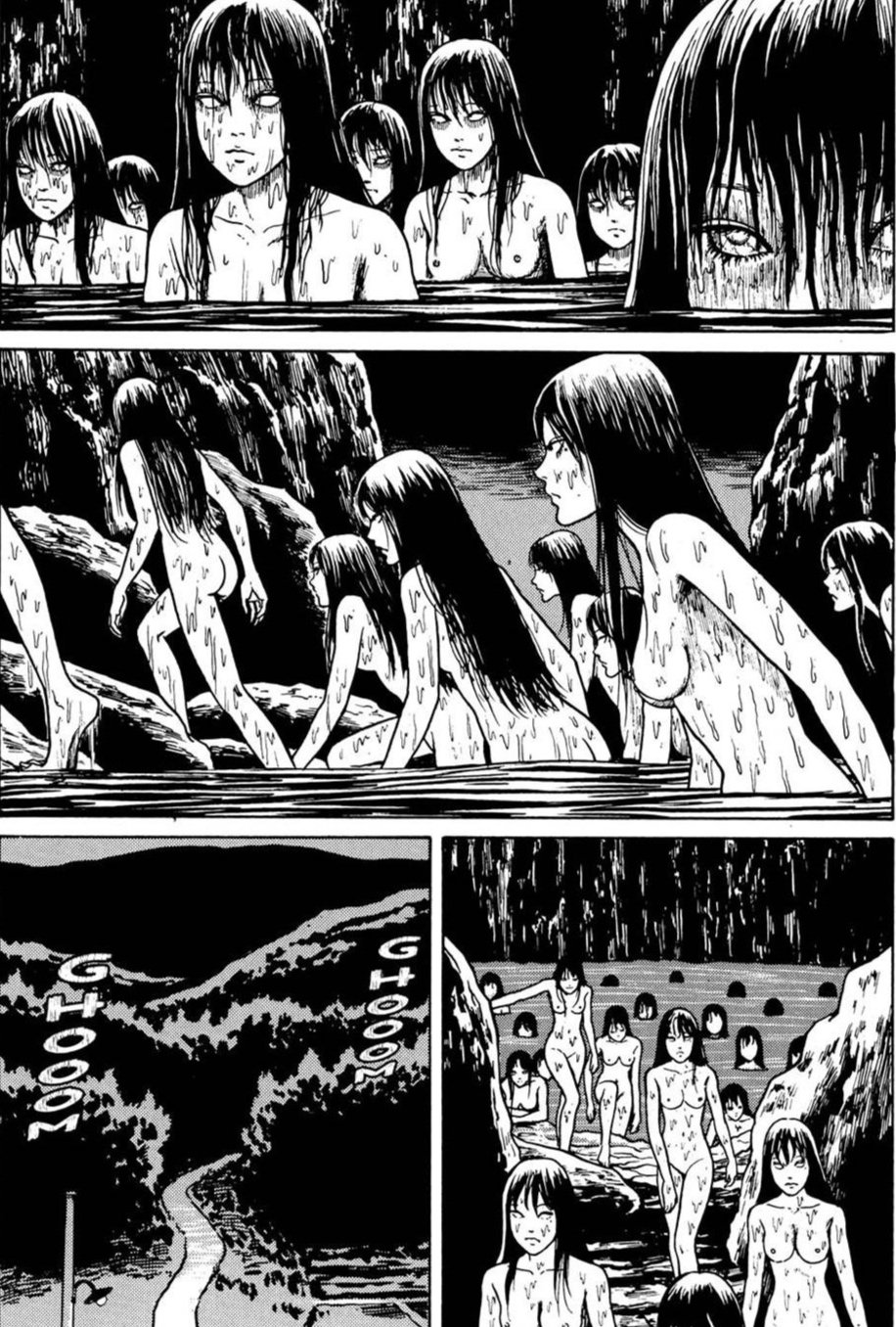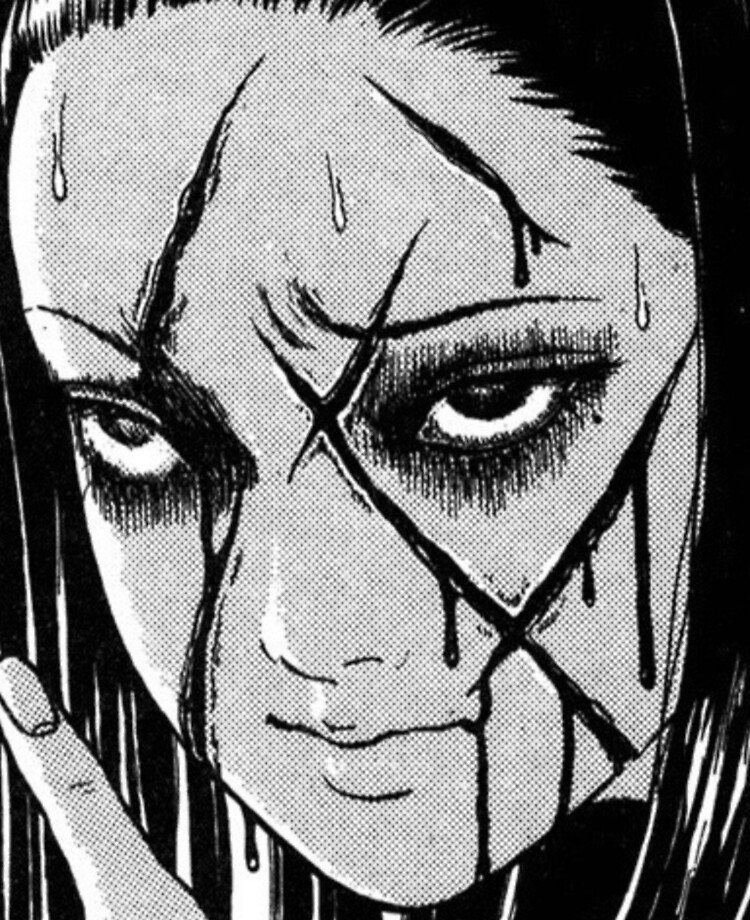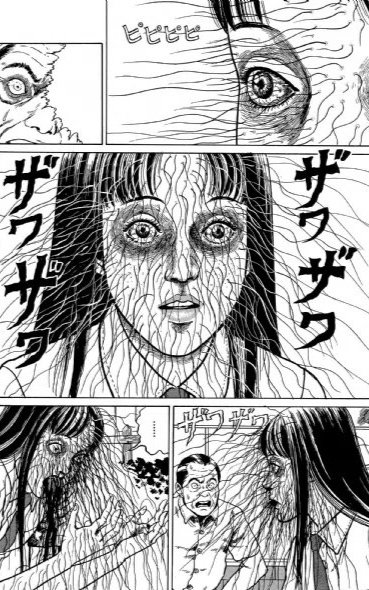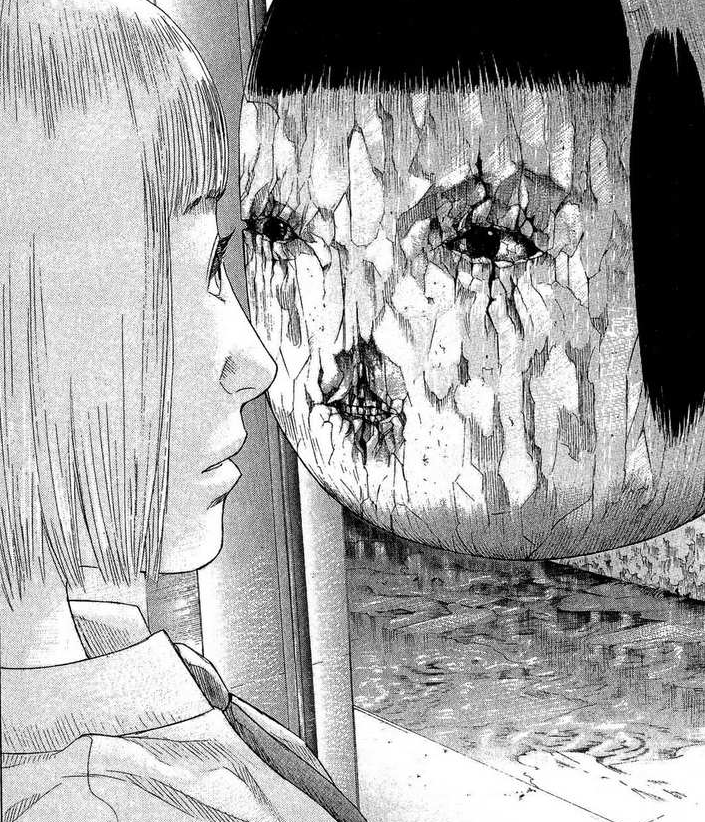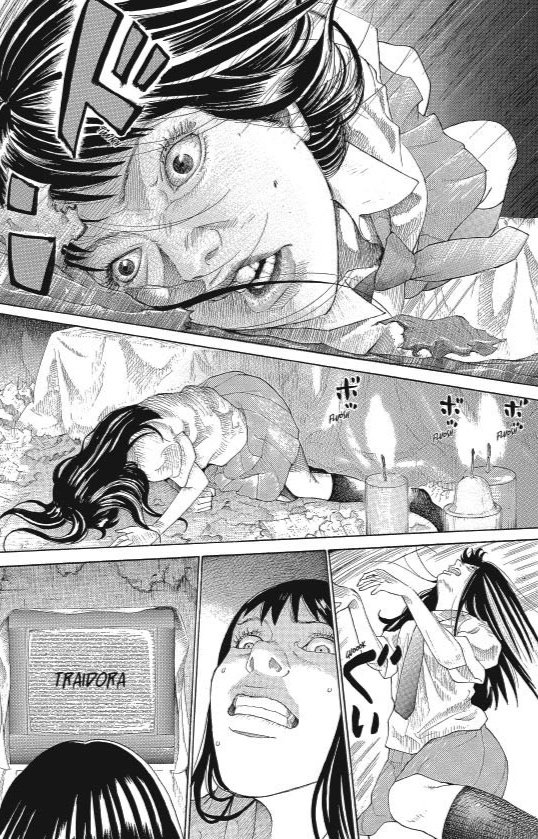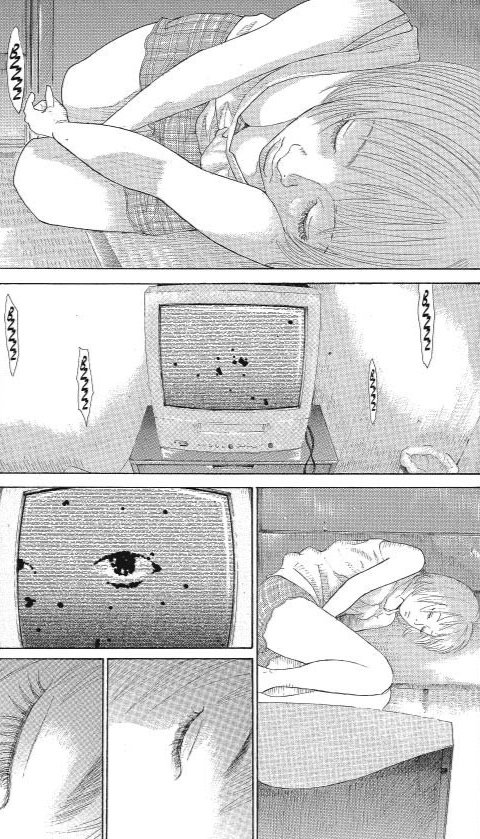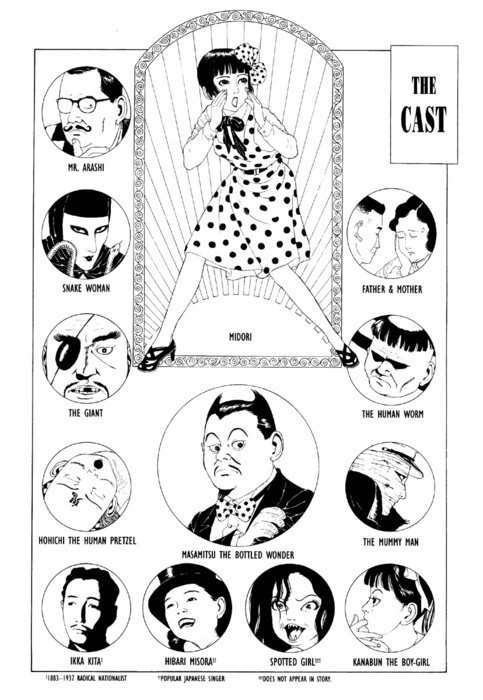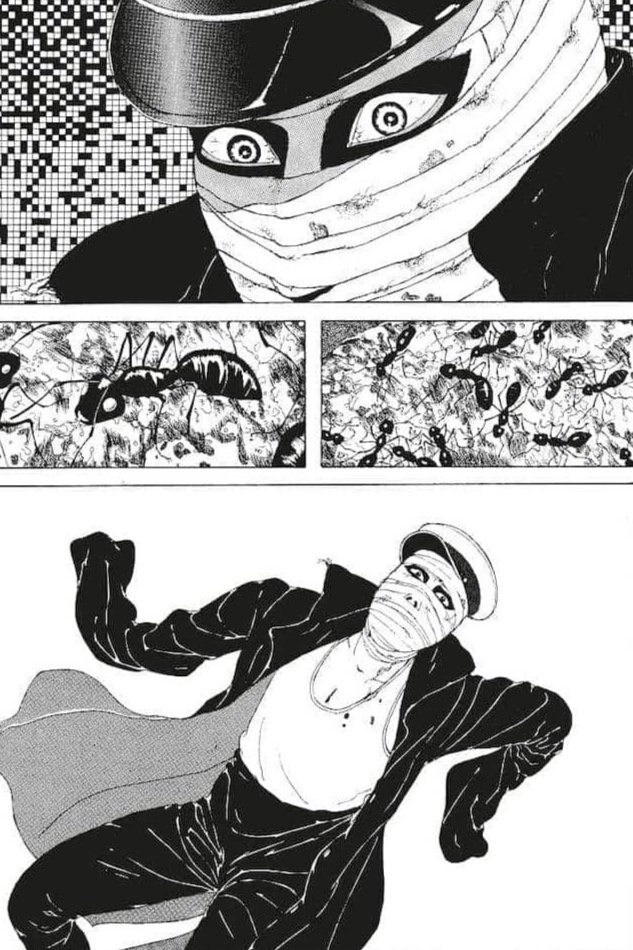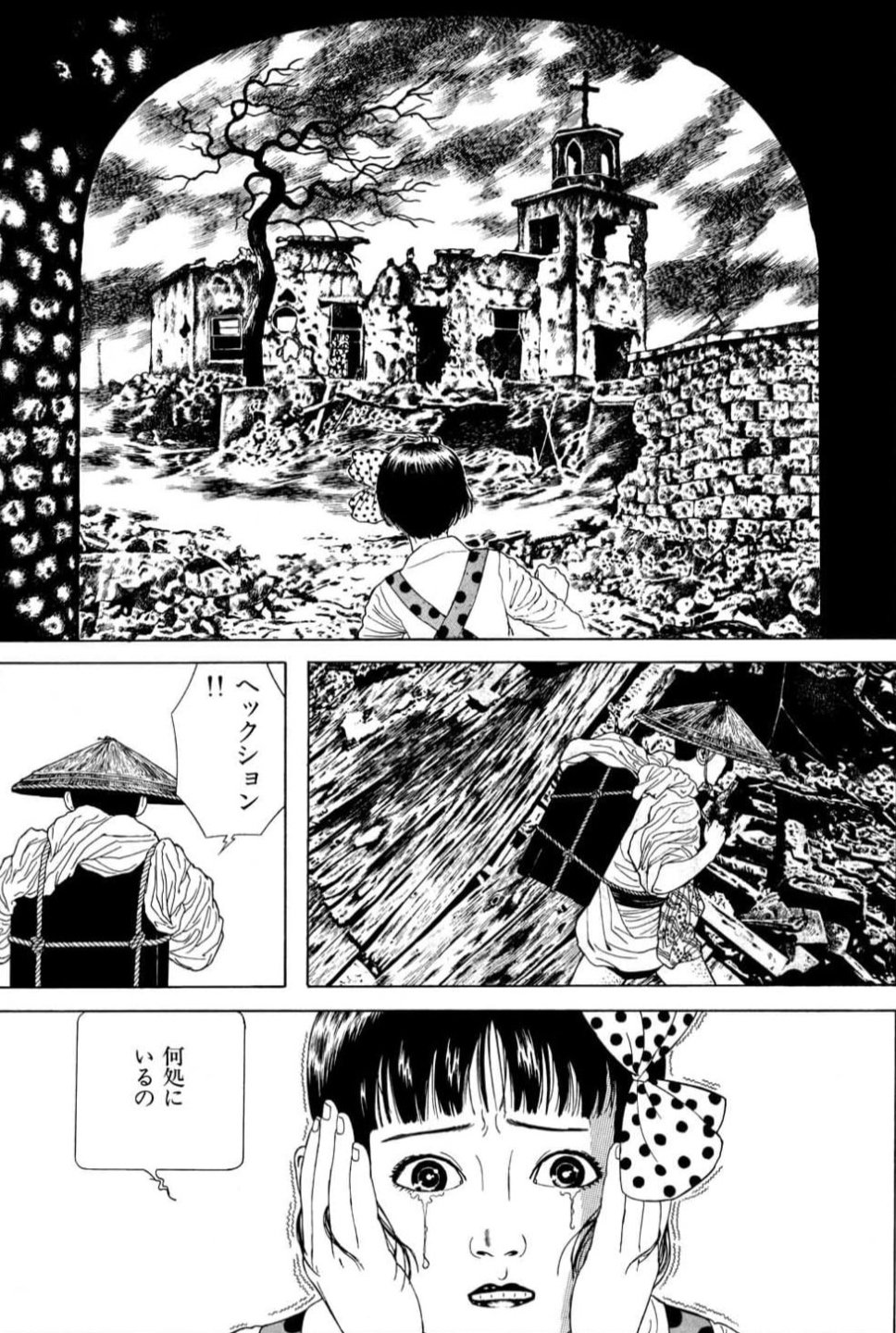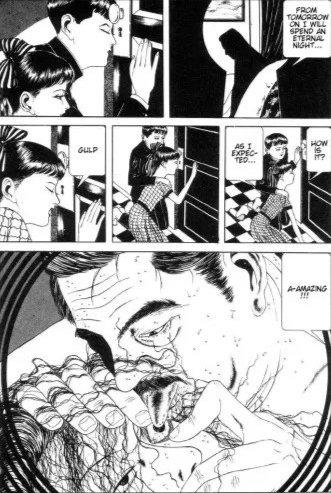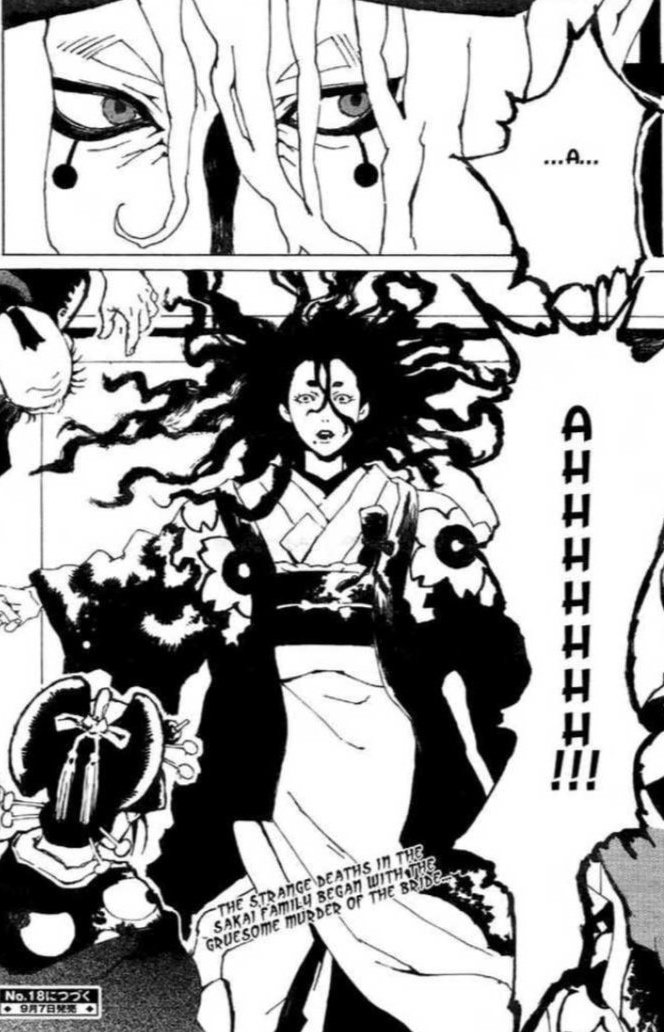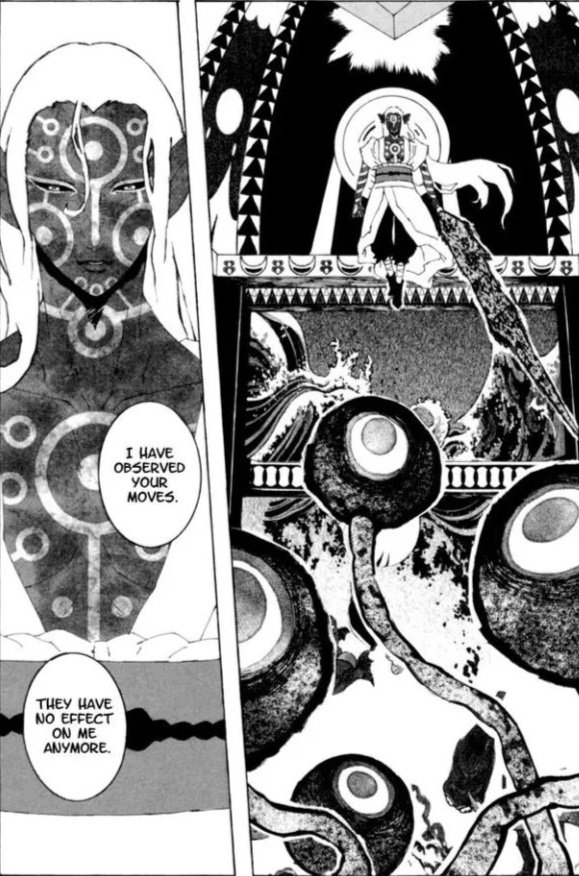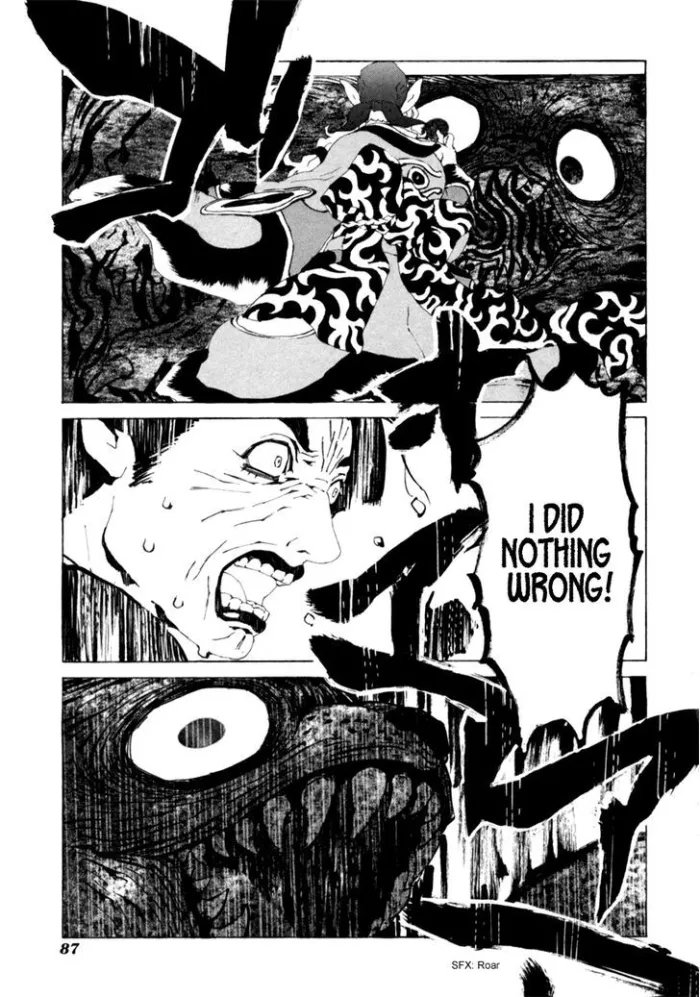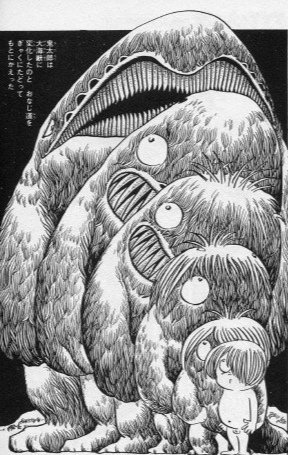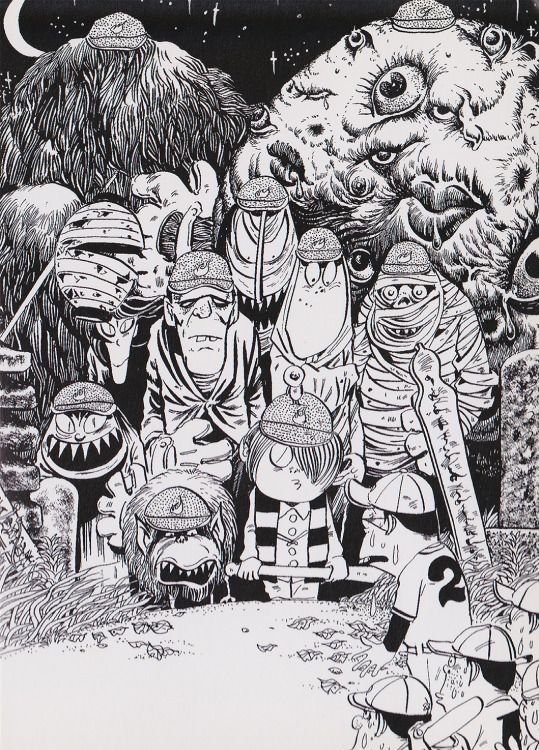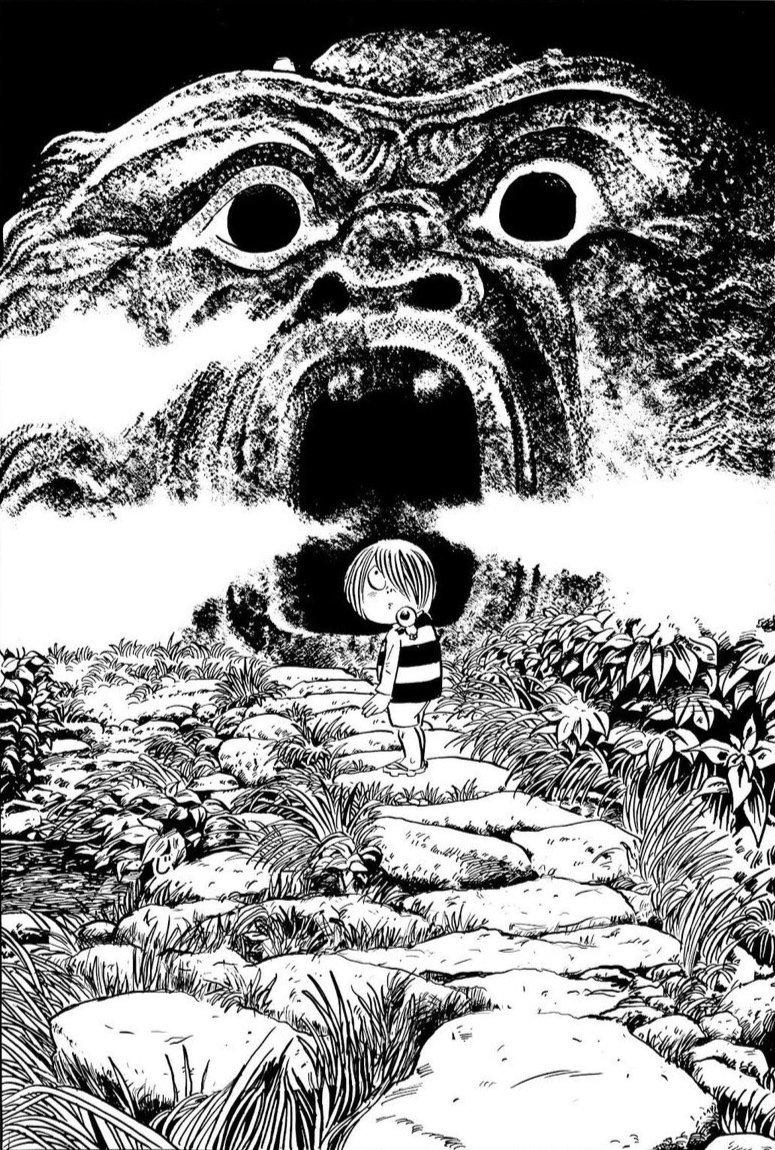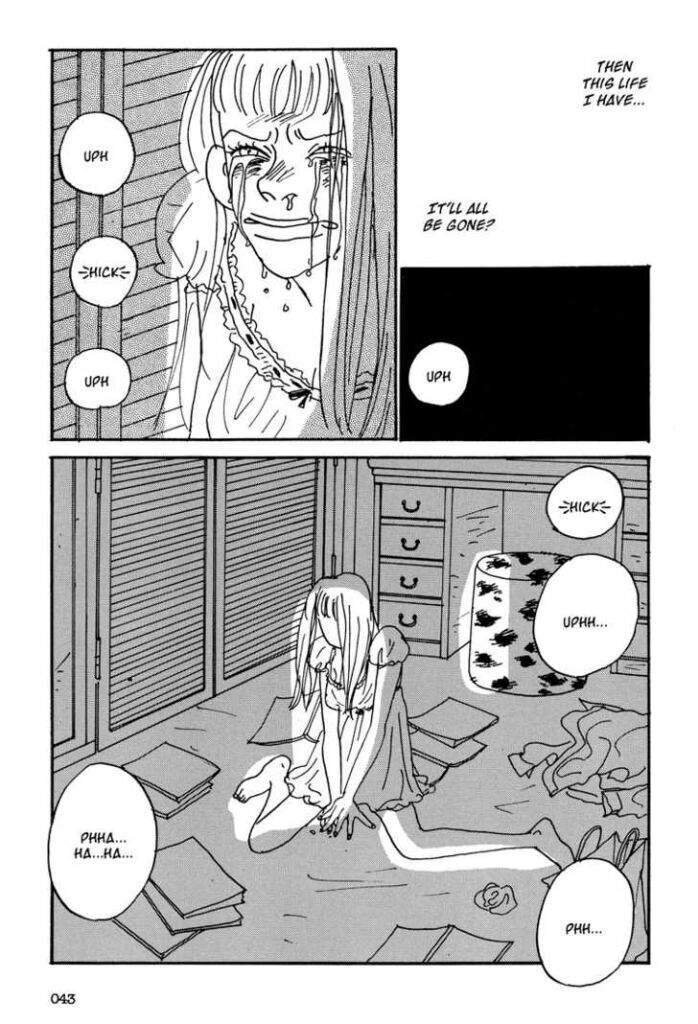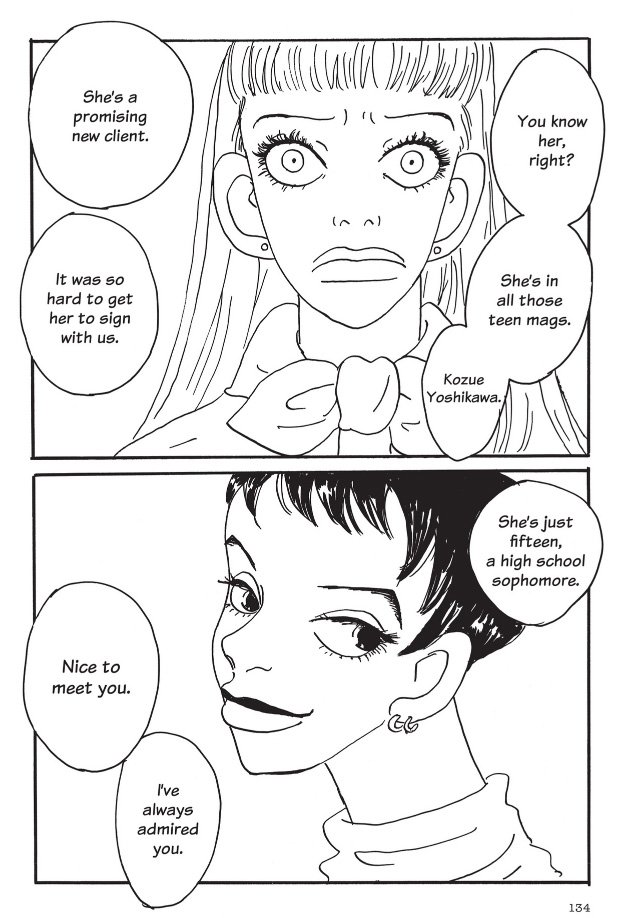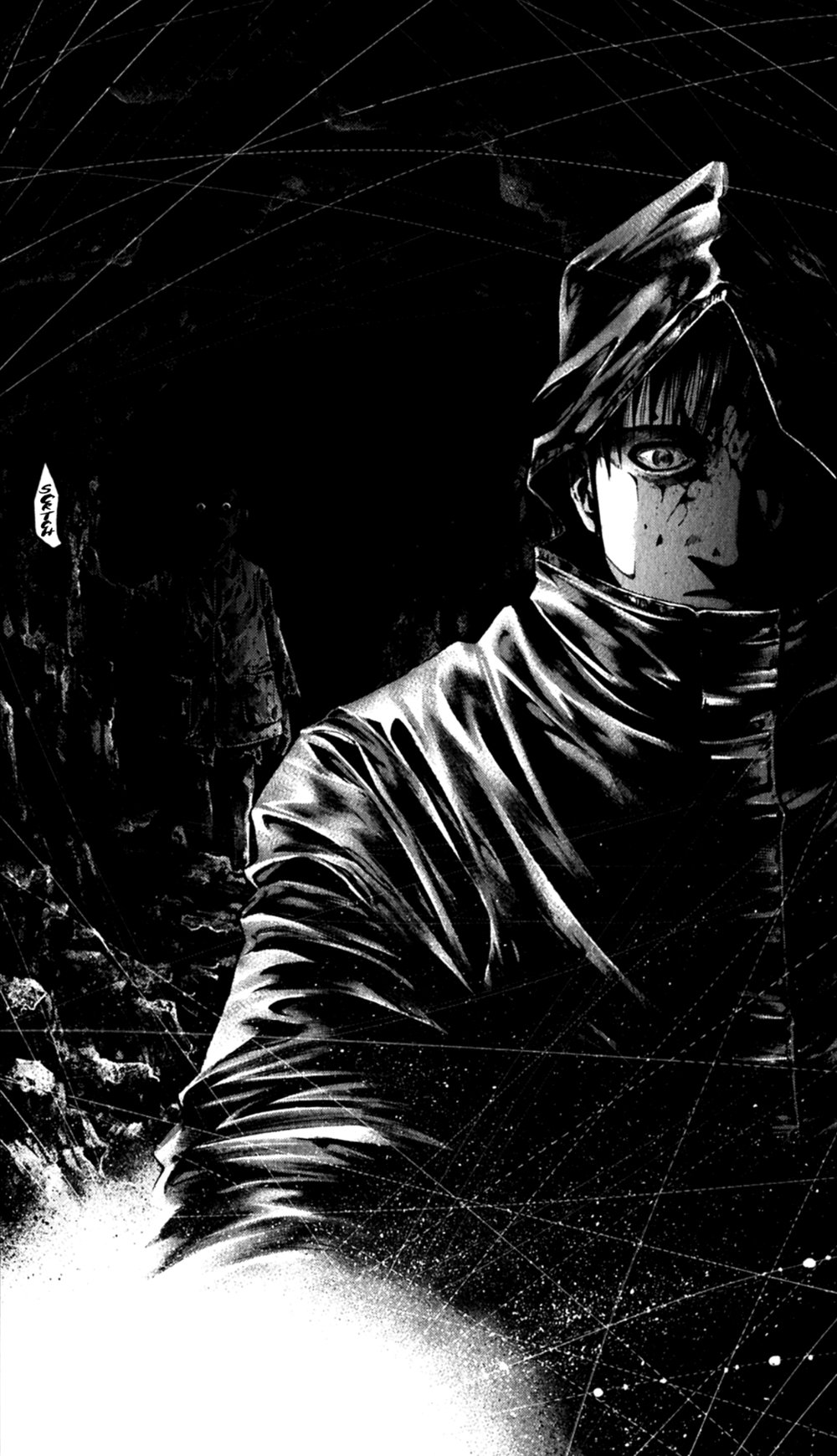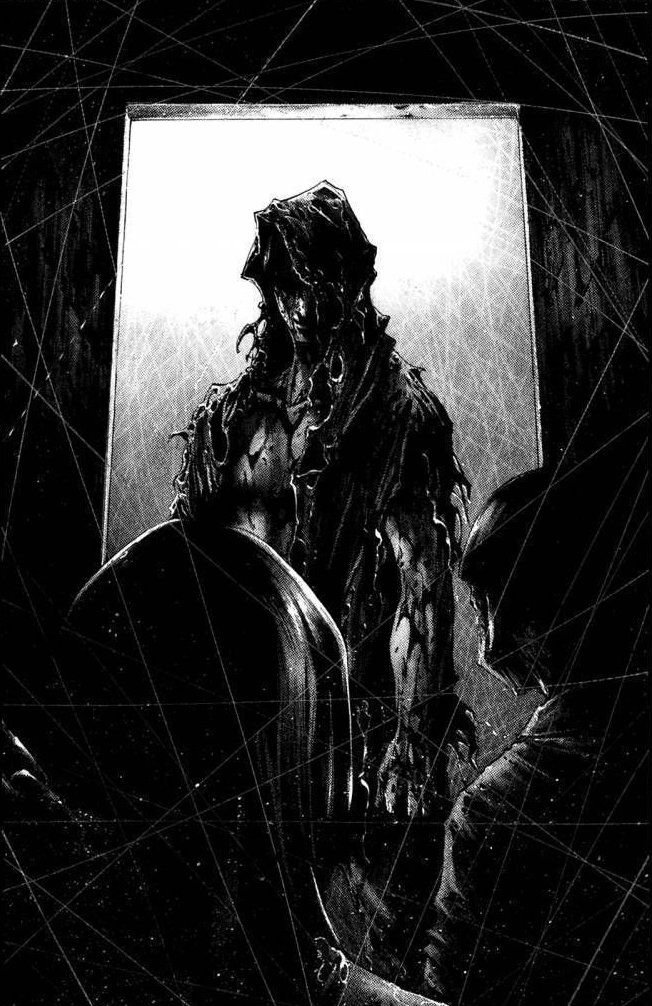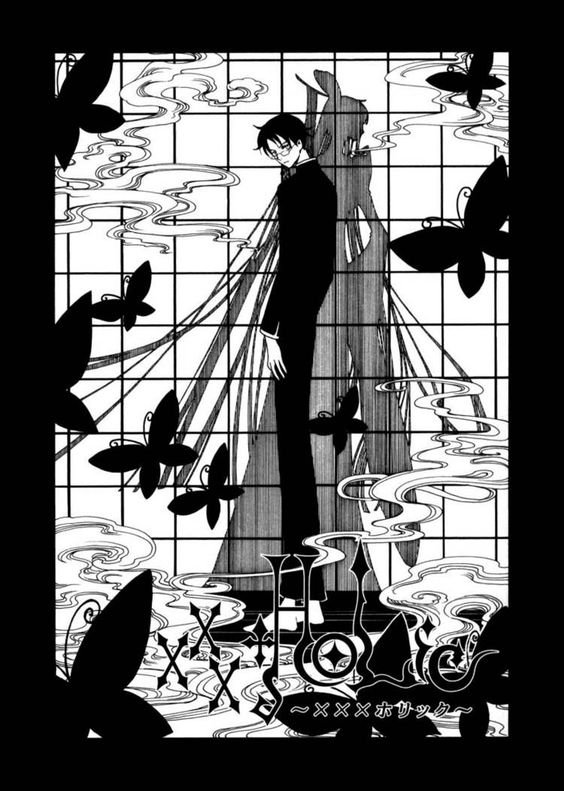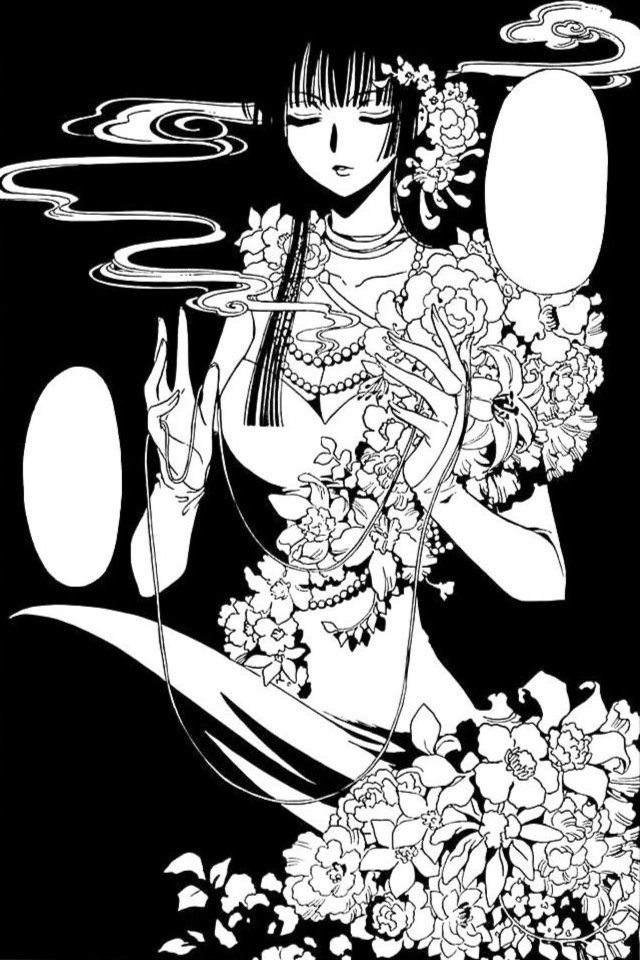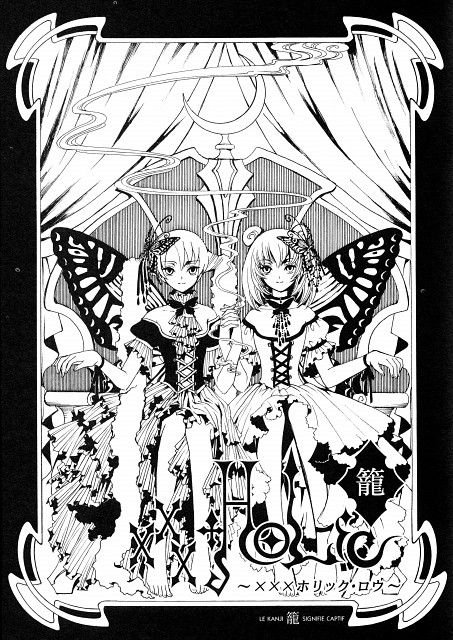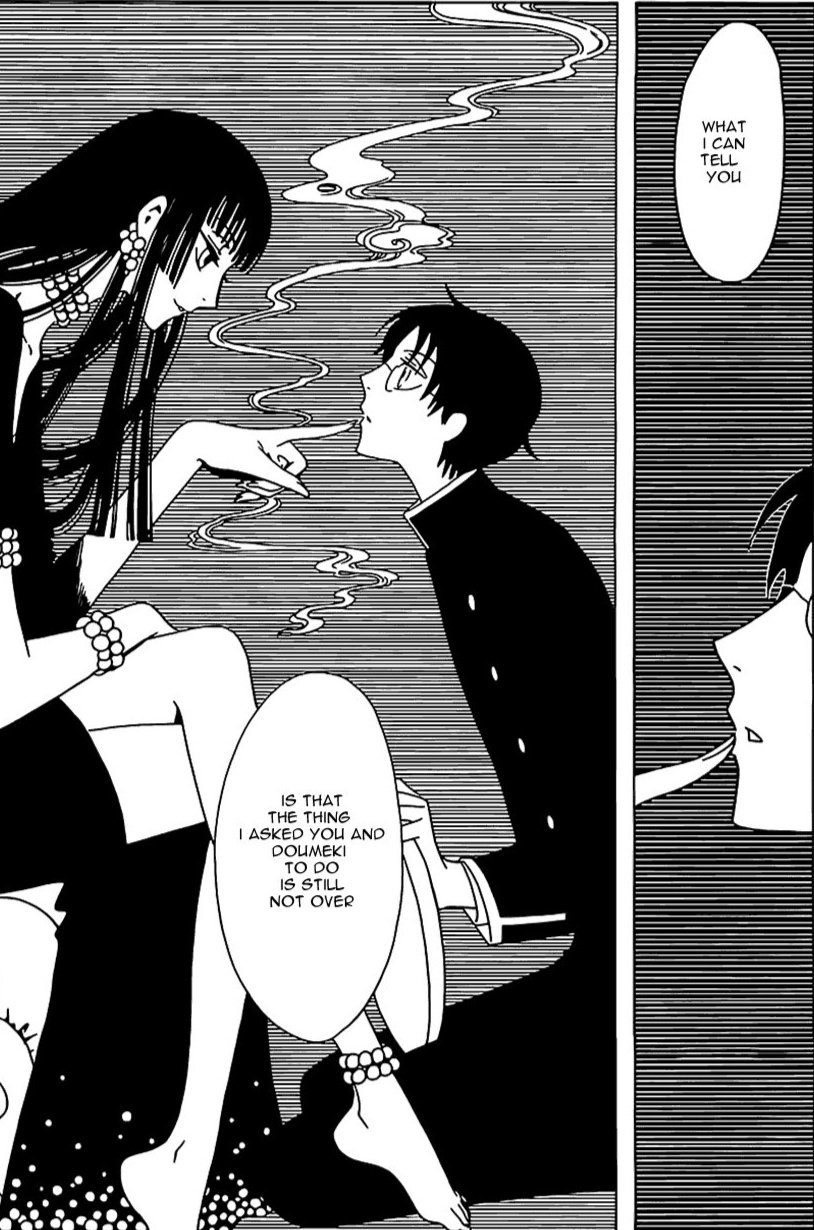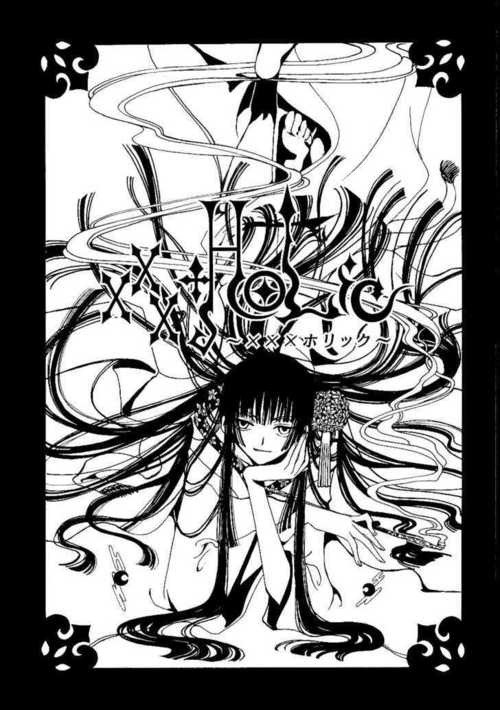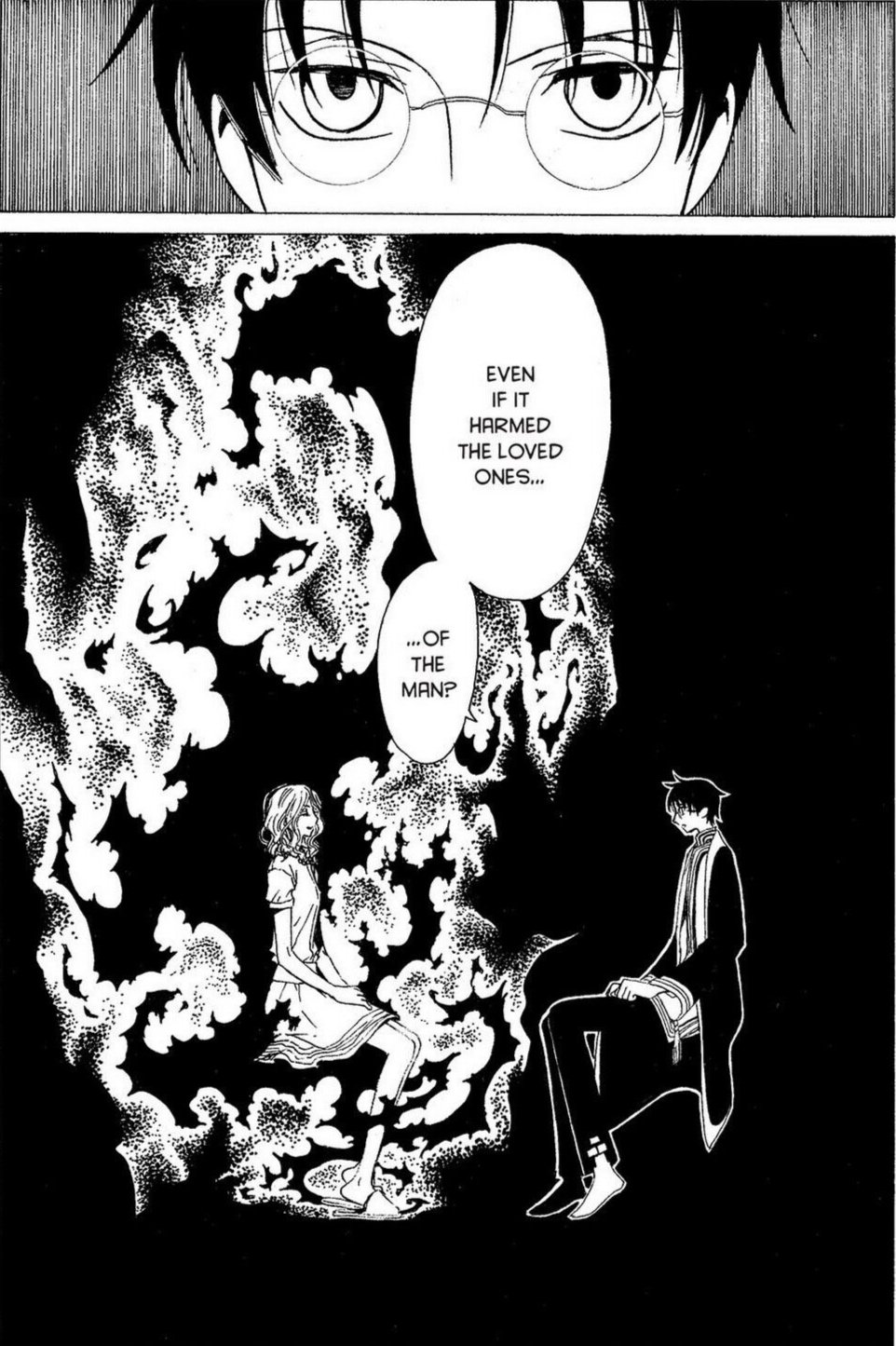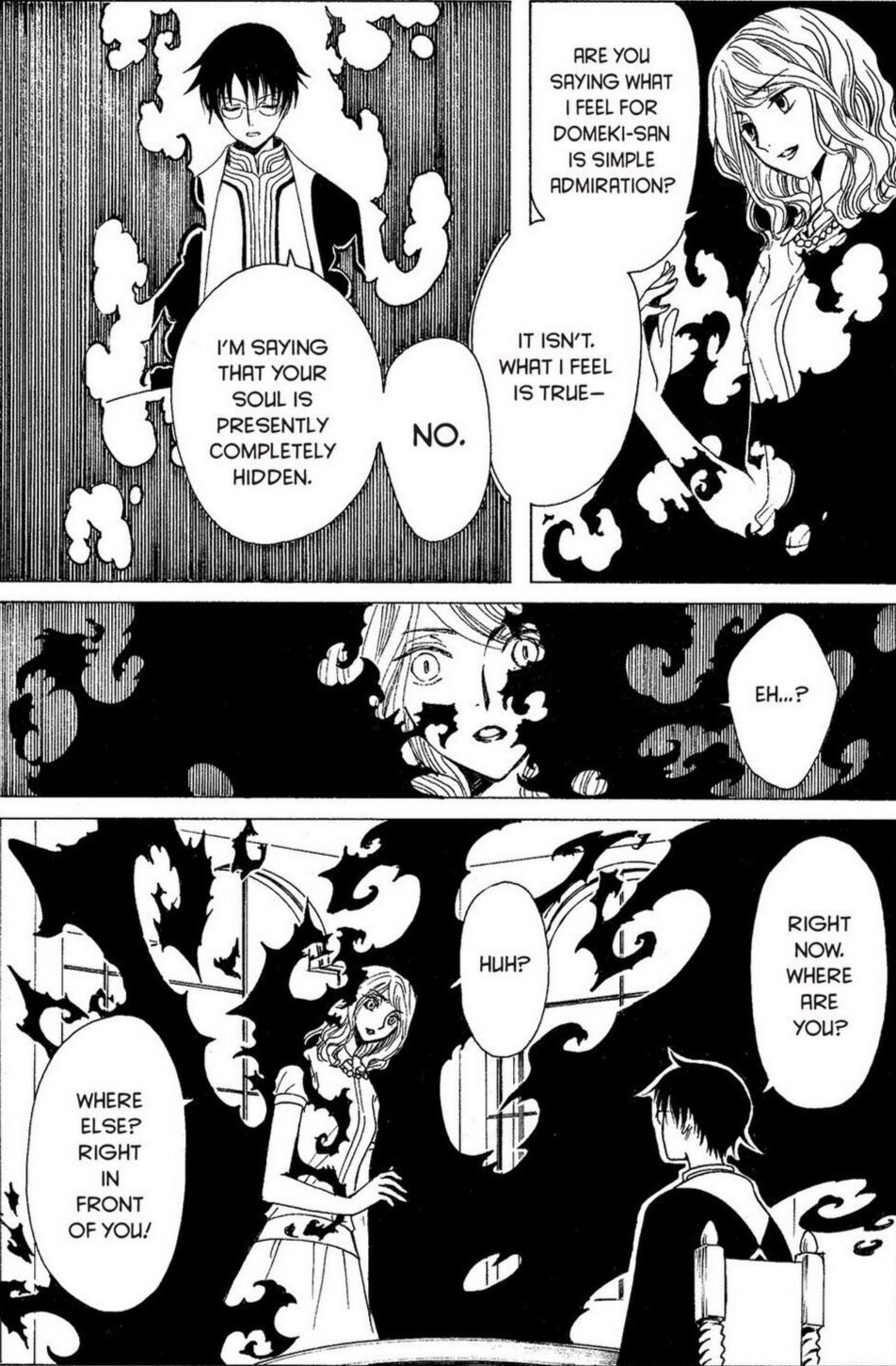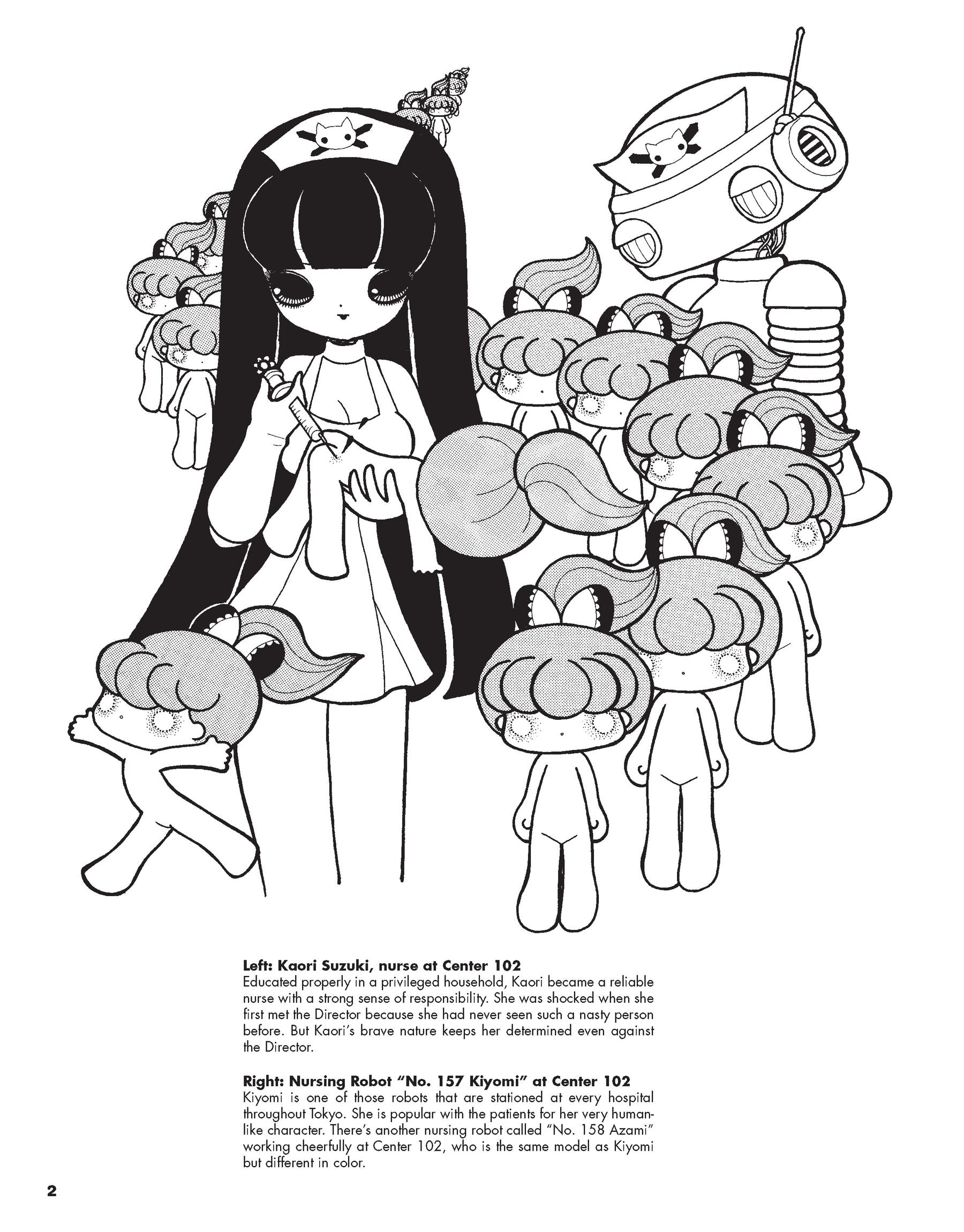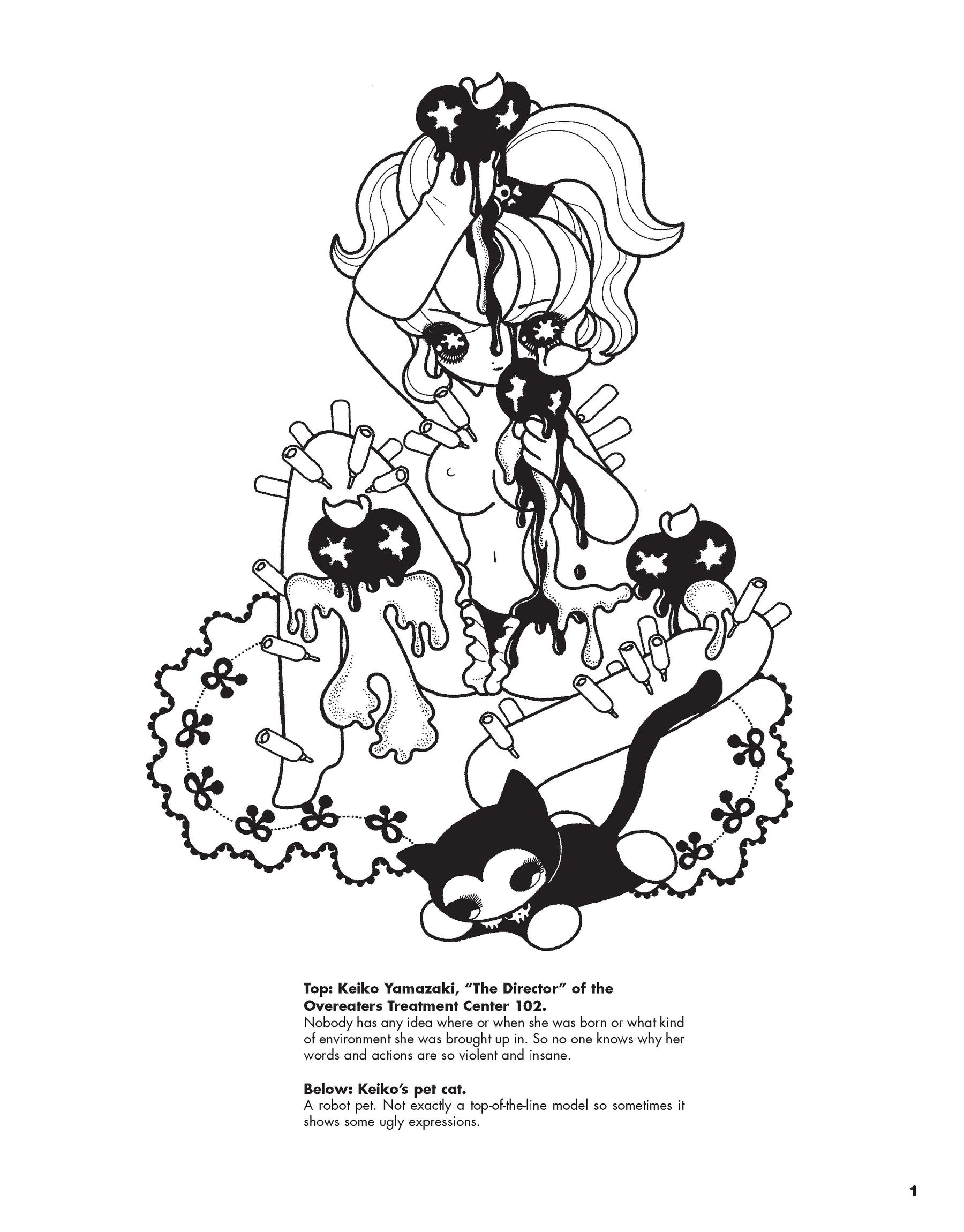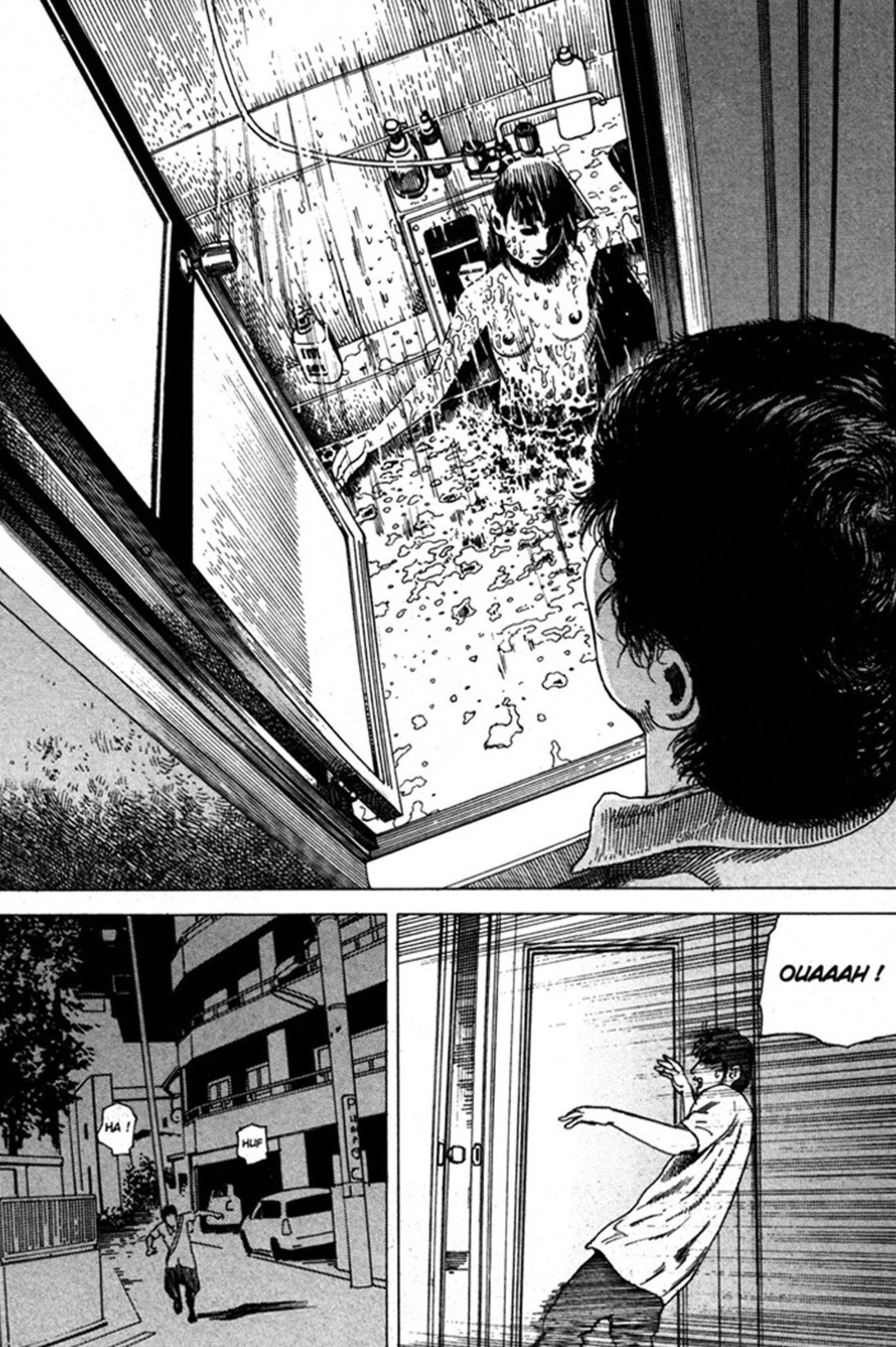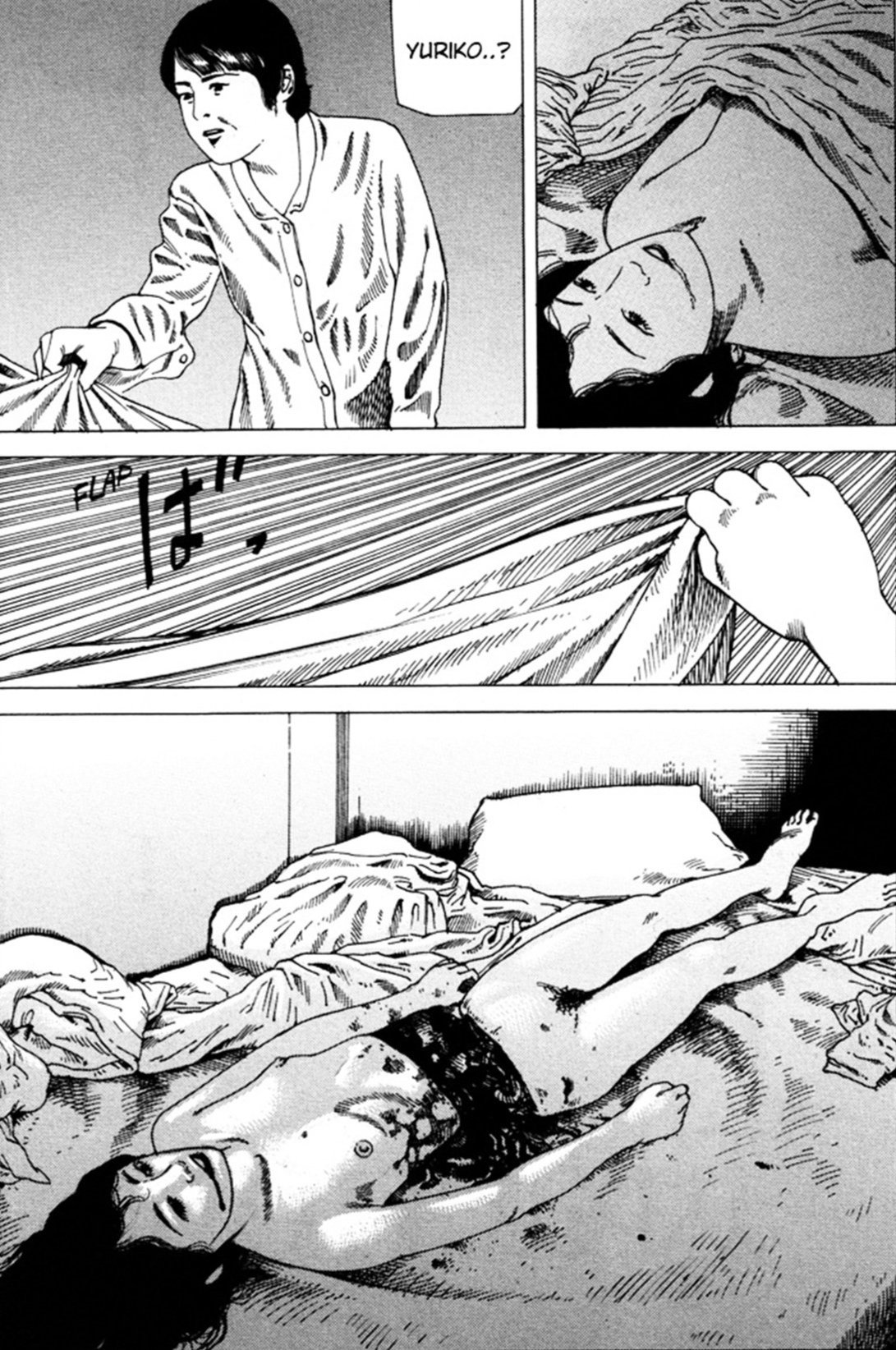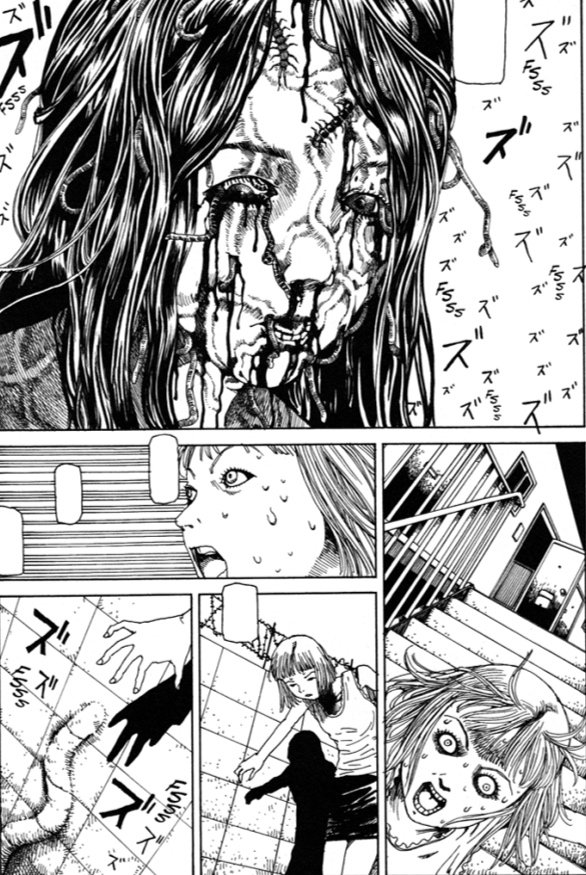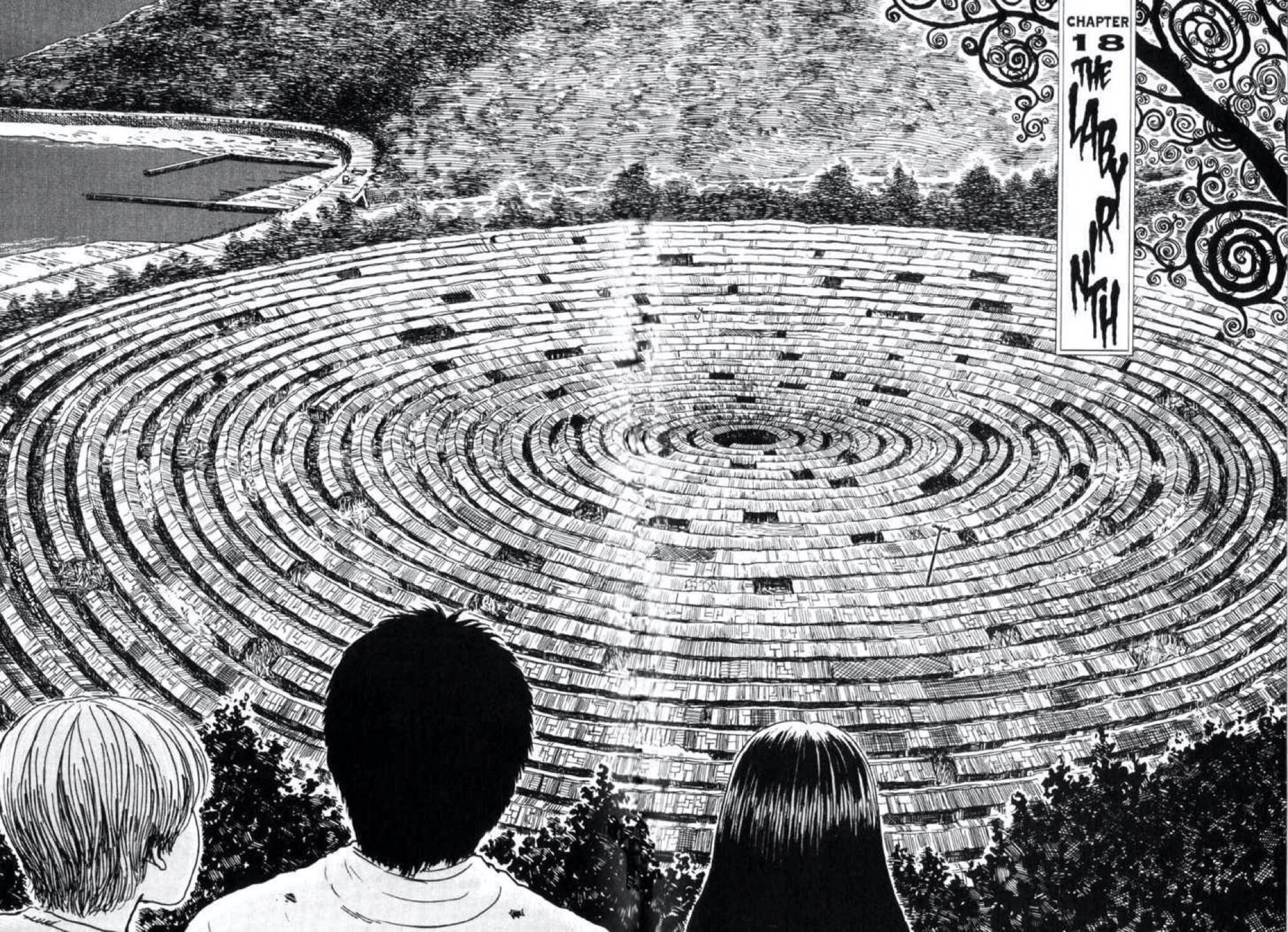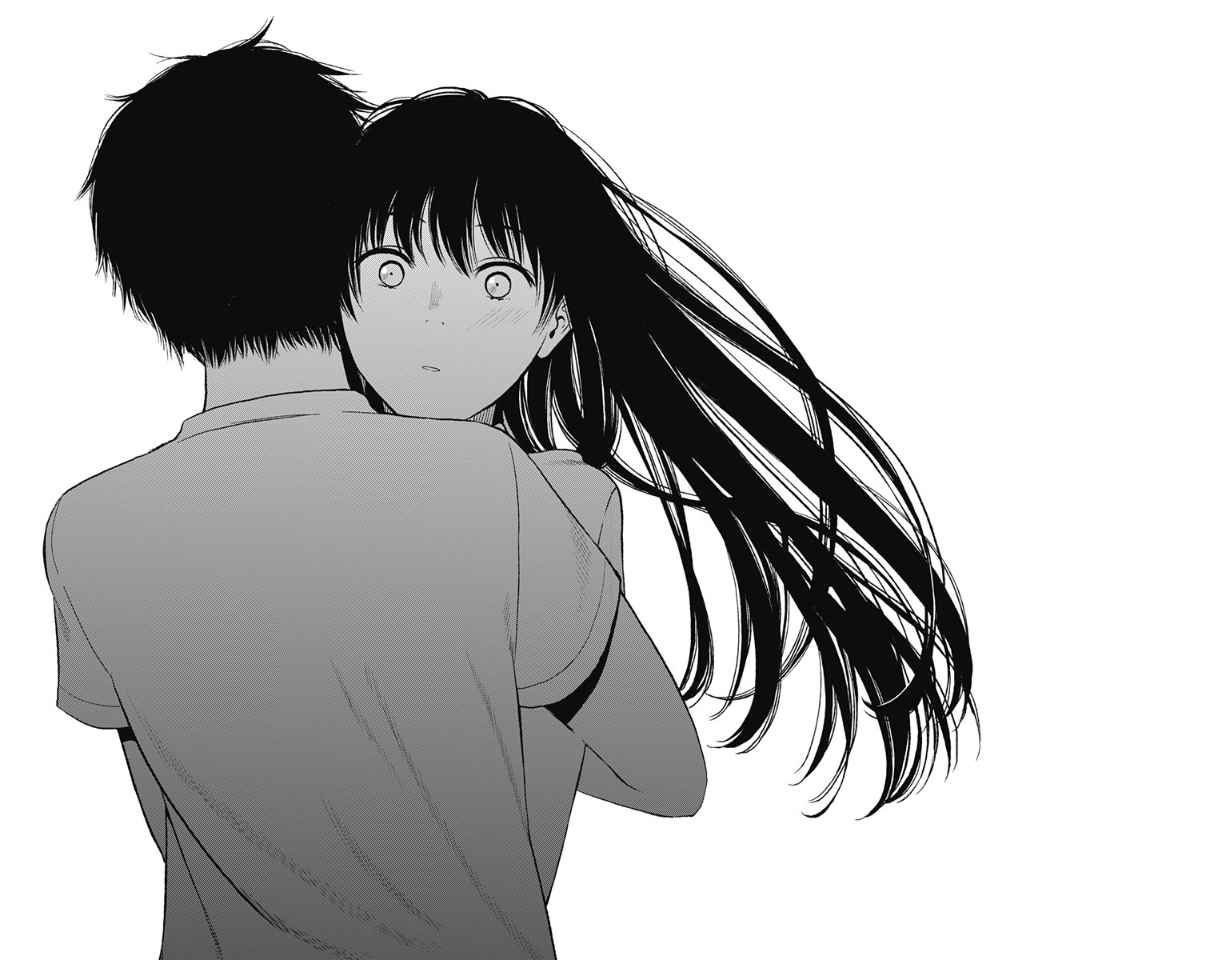The Sabukaru Guide To Dark Horror Manga
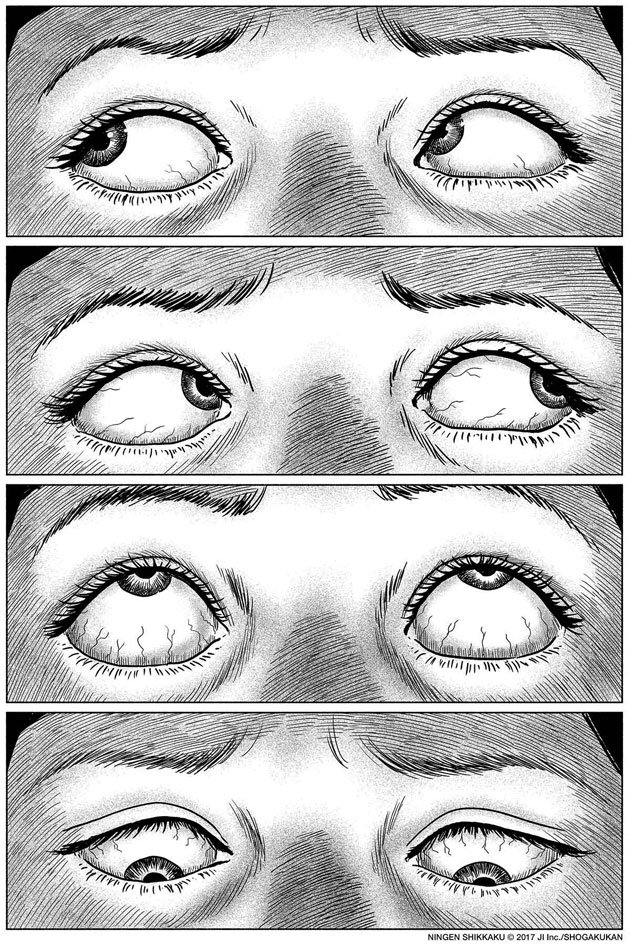
Japan is no stranger to exploring the beauty of the darker aspects of life, whether it be through tales of yokai [spirits] and obake [ghosts] or rituals such as Obon celebrating the dead’s fabled return to earth for only a few days, there exists an expansive vocabulary and mythology dealing with the supernatural and the horrors that come with it. A marriage of blood and beauty.
A panel from Umuzaki by Junji Ito
Japanese horror manga is no different, the genre is definitely not a new phenomenon but an ever-evolving, ever relevant, showcase of how evil, murder, carnage, and suspense continue to draw us in into a twisted obsession with the occult. Recent collabs with horror manga greats, such as Junji Ito’s apparel collection with the mall-goth brand Hot Topic or Kazuo Umezu’s manga Drifting Classroom becoming a smash hit both in Japan and abroad, signal that the public craves stories in our increasingly unpredictable world, that explore our hidden fears and desires as voyeurs removed from any immediate danger. Horror manga strikes that perfect balance of drawing us in and repulsing us at the same time.
A panel from Kazuo Umezu’s Drifting Classroom
Horror manga has its roots in 1600’s ukiyo-e art [think geisha’s on woodblock prints] that depict once innocent maidens turned into vengeful spectors, demons gone wild, and fantastical representations of hell inspired by Buddhist scripture. As manga’s popularity exploded in the 19th century, classic horror legends of old were transferred to the inky black and white pages of comic books with themes discussing the deceptiveness of beauty, the cruelty of human nature or the power of revenge started to fill the pages of narrative comic books.
Horror in manga isn’t limited to just gore and slashed-up body parts, but it takes a more insidious path preying upon the readers own insecurities, building our attachments to characters who will soon meet their doom, or even worse making us sympathize with even the cruelest of villains all while mesmerizing us with stunning graphics.
Ukiyoe prints that influenced the dark horror manga genre
Ask any otaku, or someone addicted to the thrills of dark manga, who the undisputed king of the genre is and they’ll likely drop Junji Ito’s name. The manga-ka behind Uzumaki and Tomie, whose trademark obsession-driven characters or hypnotically beautiful villainesses, seduce unsuspecting victims to their doom, make him an undisputed legend. However, the horror genre has other gems aside from his works, with entries from newer manga-ka taking psychological approaches to horror and the unsung heroes of the genre that are addictive because they take fear and gore to new heights. Let Sabukaru introduce you to some of the best Dark Horror Manga masterpieces.
Tomie [富江 ] by Junji ito
Junji Ito’s title as the reigning master of horror isn’t without good reason and an essential read if you're just starting your journey into the dark manga genre. Tomie, his debut feature-length manga published in 1987, is the precedent that newer manga-ka aspire to live up to. Originally published in Monthly Halloween, a horror manga magazine with one story released a week, each chapter serves as an independent story. Although a total of only 3 volumes long, Tomie’s pop-culture significance has heavy staying power. Tomie, the manga’s titular main character is the classic femme fatale, an immortal succubus, whose charm causes men and some women to fall madly in love with her, but, with lethal consequences.
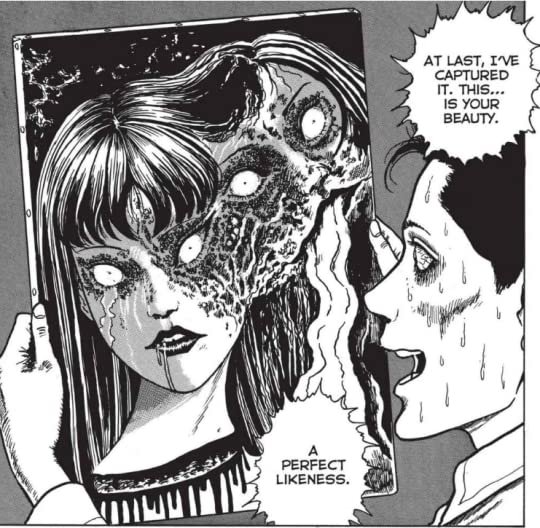
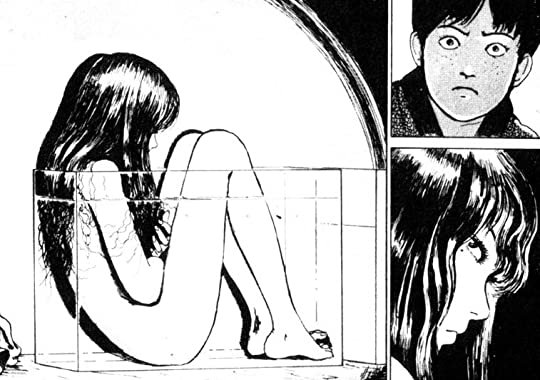
In the depths of their obsession, Tomie’s suitors resort to desperate acts fueled by jealousy , often resulting in Tomie’s brutal murder at the hands of these desperate lovers. Inexplicably Tomie becomes resurrected even after she’s killed, reborn but destined to continue the cycle of constant torment by those madly in love with her. Tomie’s twisted narrative explores the blurry boundaries between love and obsession, as well as the age-old trope that behind beauty lies terrible deceit. Aside from it’s psychological plotline, the artwork is breathtaking, Ito’s ability to make Tomie both incredibly beautiful and monstrous at the same time is unparalleled.
Portus by Jun Abe
“Do you want to go to the other side?” That's the ominous question asked in Jun Abe’s debut masterpiece Portus, and only full length horror manga that has left audiences hankering for more for over a decade. 17-year-old Asami Kawakami has gone missing, and it’s up to her childhood friend Chiharu and the head teacher of the local highschool’s Art Club, Keigo, to find out what happened. Soon the duo’s greatest fears become realized. Asami is found dead apparently by suicide, after becoming addicted to an insidious game titled “Portus”, where losing has fatal consequences and monsters seem to escape the virtual realm to prey on the living. When the game suddenly appears in Chiharu’s room, he decides to play it in the hopes of unraveling his friend's death and save others from the same dark fate.
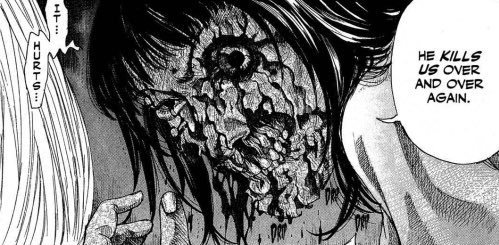
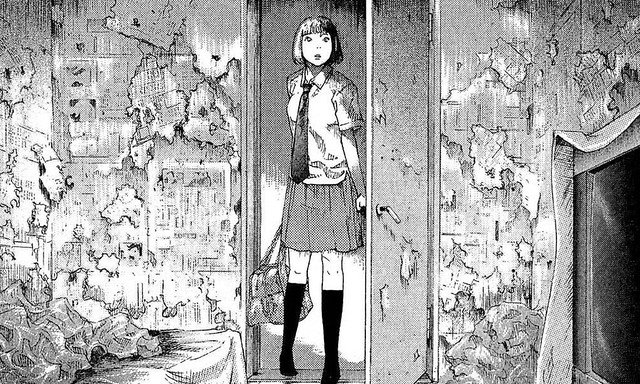
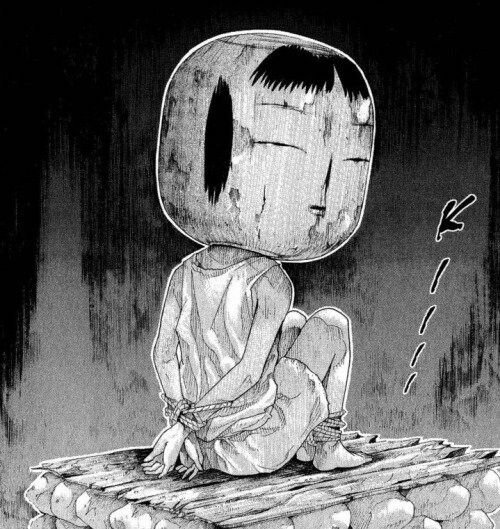
Portus adds something new to the standard “game turns into a horrendous reality” plot line through its suspenseful pacing and splendidly engaging graphics, adding the right balance of slice of life and horror that makes the comic so addicting. Bonus points: this title is an underrated gem, with a steady but lowkey fanbase that will earn you street cred for having read it.
Mr. Arashi's Amazing Freak Show [少女椿] by Suehiro Maruo
The best horror mangas understand our most shameful phobias and existential anxieties. No one touches upon very real taboo topics such as abuse, poverty, and the difficulties of adolescence better than Suehiro Maruo in his cornerstone of the ero-guro genre Mr. Arashi's Amazing Freak Show, a manga as beautiful as it is controversial.
Although the plotline can be triggering due to mentions of pedophilia and assault, the manga is unique because it artfully transports readers to a different realm full of retro relics of Showa era Japan, such as classic freakshow characters like snake charmers or bearded ladies, as well as drawing inspiration from figures from pre-WWI plays and puppet shows in Japan “Shojo Tsubaki” trope (an innocent girl sold into the red light industry because of financial instability).
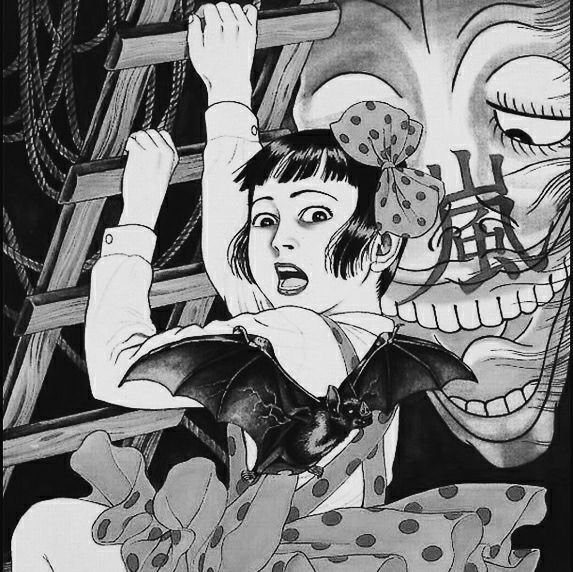
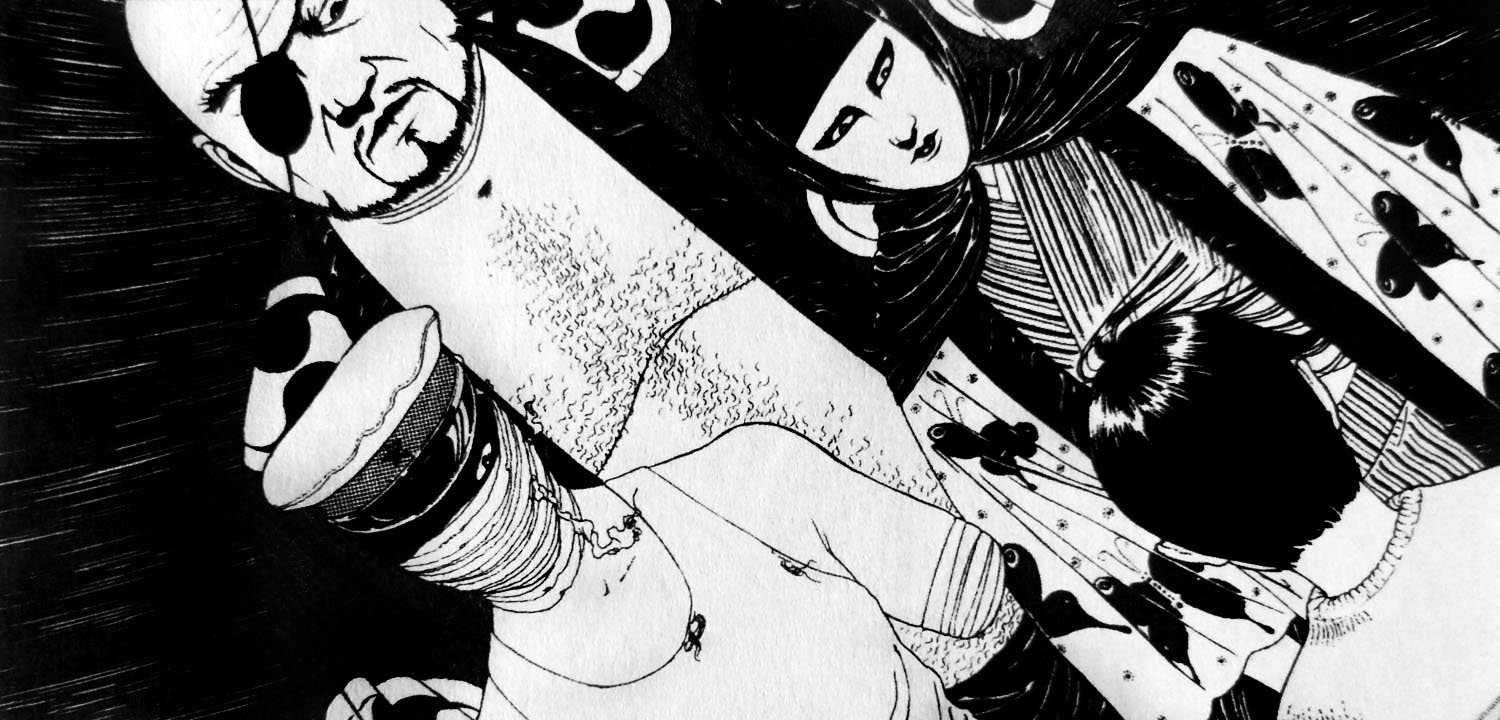
Mr. Arashi's Amazing Freak Show centers around an orphan girl named Midori who is adopted by a traveling circus and attempts to escape via a strange, twisted romance with the show's ringleader and her abuser. While your eyes scan each panel, one is reminded of the true horrors of being powerless and trapped in a seemingly cruel world. Truly a homage to the graphic illustrations of Japan’s showa era, while reading Mr. Arashi you also learn a bit about Japanese graphic design history as its illustration style is a marriage of 1920s advertisements, pulp novel sensibilities, and even Showa era propaganda posters.
Mononoke [モノノ怪 ] by Yaeko Ninagawa
Mononoke adds a layer of trippiness to the horror manga genre, chronicling the adventures the protagonist simply known as “The Medicine Seller'' encounters on his quest to kill evil spirits called “mononoke”, but not merely slaying them but understanding “their Form, their Truth, and its Reason”. These mononoke exist in the realm of the living by attaching themselves to negative human emotions such as anger, jealousy, and greed. The Medicine Seller’s desire to understand what motivates the demons he exorcizes, allows the viewer to empathize and identify evil aspects in our own personalities.
Each chapter details a different demonic case that the medicine man seeks to unravel. Mononoke is a spinoff of the manga Ayakashi: Samurai Horror Tales, but stands out on it’s own because of the comic’s intricate psychedelic patterns replicating LSD hallucinations, and unique use of vibrant color despite the horror genre's penchant for black and white panels. Plus, its references to the occult side of Shinto religion and classical Japanese folktales, make the comic a perfect mixture of historical inspired horror plus modern graphics.
Kitarou of the Graveyard [墓場鬼太郎] AKA GeGeGe Kitarou [ゲゲゲの鬼太郎] by Shigeru Mizuki
The predecessor to manga-ka such as Junji Ito, Suehiro Maruo, and Hideshi Hino, Shigeru Mizuki, the creator of Kitaro of the Graveyard, defined the aesthetics of Japanese horror comics as early as 1960. GeGeGe Kitaro earned acclaim by combining a coming of age story with Japanese folklore. The plot focuses on young Kitaro, the last surviving member of the “Ghost tribe”, a clan of spirits, who receives guidance from his deceased father who communicates with him through a severed eyeball. Kitaro’s goal is to have yokai and human beings coexist in harmony, rather than resort to violence.
Through GeGeGe Kitaro, not only did Mizuki pave the way for future development of the horror genre by blending more whimsical artistic elements with dead serious topics, but the manga-ka himself is an aspirational figure. In many ways, Kitaro of the Graveyard is the author's coping mechanism to deal with his experiences as a veteran in WWII. At the age of 21, he was drafted into the Japanese imperial army at the onset of the war. Forced to serve in Papua New Guinea, Mizuki returned to Japan from combat with his left arm blown off and being the only survivor of his fleet.
Along with publishing his personal accounts of the horrors of war in a manga titled Onwards Towards Our Deaths, his work Gegege no Kitaro preaches world peace intertwined in illustrations of graveyards and ghosts. In interviews, Shigeru Mizuki expresses his interest in yokai stems from his desire to understand mortality after being so close to death himself during war times. His work exemplifies how death is viewed in Japanese culture, by including folklore from centuries ago while also expressing personal horrors he experienced first hand.
Helter Skelter [ヘルタースケルタ]ー by Kyoko Okazaki
Beauty is pain, beauty is everything. That’s the motto that Helter Skelter’s monstrously narcissistic main character Liliko lives by, delving deeper into insanity and depravity as she undergoes increasingly risky plastic surgeries just to hold on to the fleetingness that is fame and youth. Liliko probably wins the award for the most irredeemable character in manga history, as an unapologetically narcissistic aging supermodel obsessed with maintaining her legendary status in the notoriously fickle fashion industry. Liliko’s beauty won’t last forever, as her body begins to wither and break down due to the risky full-body plastic surgeries she’s undergone.
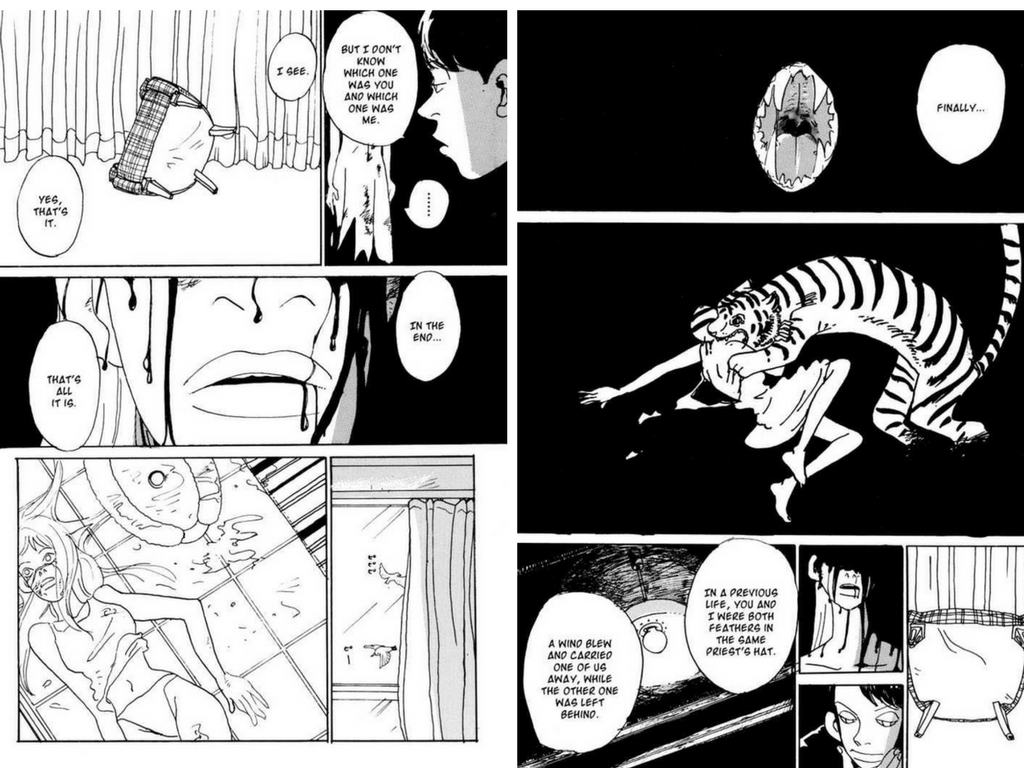
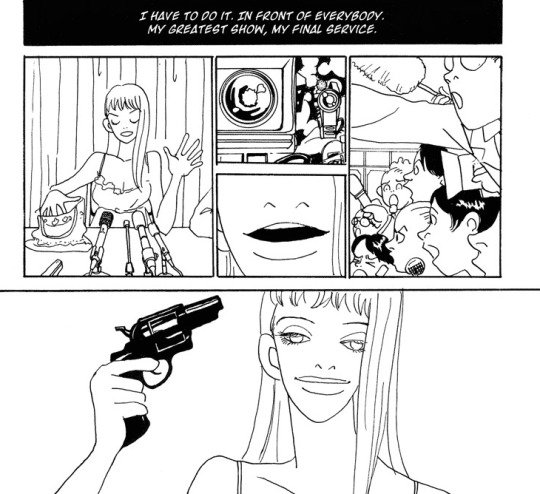
Soon, Liliko finds herself as person of interest for an investigation on dangerous and illegal plastic surgeries, leading her to take desperate measures for her secret to remain hidden from her fans. To make matters worse, she finds herself in competition with a seemingly perfect younger model, Kozue, leading Liliko down a path of revenge and sabotage to take down her rising star rival. Helter Skelter has a deceptively simple art style that places Liliko and her unraveling front and center. It’s the perfect manga to fit our age of rapid influencer stardom and the cult of youth that cuts deep into our biggest fears.
Hideout by Masasumi Kakizaki
Hideout by Masasumi Kakizaki chronicles how one man's simple life can collapse in the blink of an eye. On a storm filled night, while on vacation with his wife lead character Seichi Kirishima plans to do the unthinkable: brutally and remorselessly murder her. Originally a loving father, a contented husband, and a writer with a promising book deal, his path takes a turn for the dark and murderous after the sudden death of his son and the fragmentation of his marriage after he’s blamed for the tragedy. But, Seichi’s cruel intentions are interrupted by even darker forces, a demonic monster, with an unbreakable grudge towards him and a hankering for human flesh.
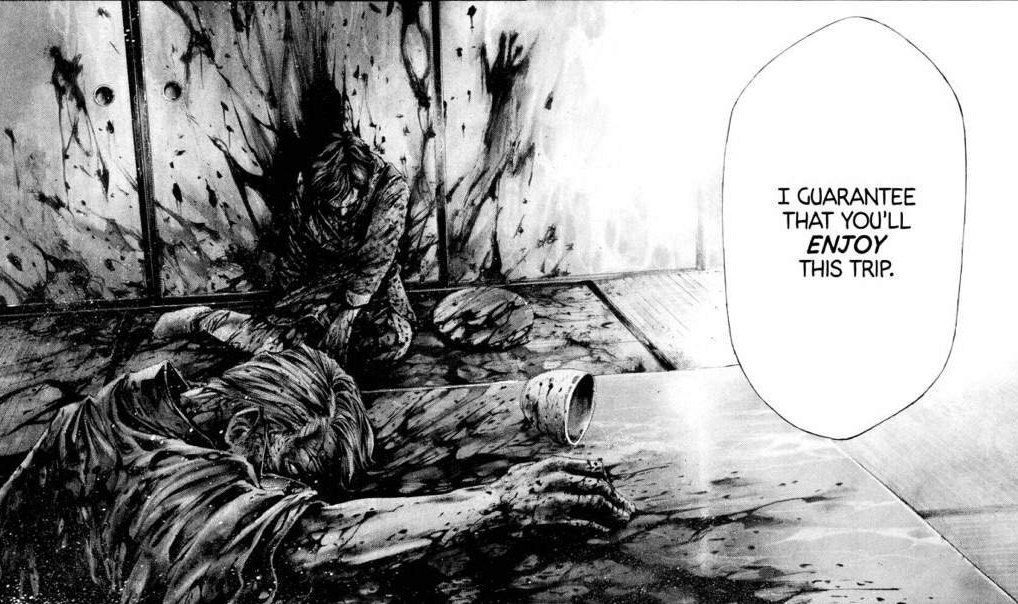
The narrative through its graphic and noirish pages, retells the plotwist laden events that lead Seichi to his path of desperation, all while delving deep into the psychology of each of its main characters, people who gain our sympathy and our disgust at the same time. Jam packed with poster-worthy artwork blending hyper-grotesque monsters, taking full advantage of shadow, and dramatic shading, Hideout fully delivers on plot and imagery.
XXXHolic by CLAMP
Do you believe in fate? XXXHolic explores the inevitability of tragedy and joy by declaring that there is no such thing as coincidence, only what is meant to be. Known for cheery child friendly smash hits such as Cardcapturer Sakura and Chobits, CLAMP the groundbreaking all-female manga-ka collective, branches out through it’s lesser-known masterpiece XXXHolic, through ornately gothic aesthetic that is as beautiful as it is chilling.
Told as a loosely connected series of short vignettes, XXXHolic tells the tale of Kimihiro Watanuki through 28 chapters, a withdrawn high school student plagued by the curse of seeing spirits when no one else can. Fatefully, Watanuki while escaping a demon finds refuge in a strange shop owned by the sultry witch Yuuko who offers clients any wish their heart desires- as long as they are willing to pay the proper price. Begging Yuuko to take away his curse, Watanuki becomes a servant to her as he works off the debt to repay her for curing him. XXXHolic is a manga that is all about the journey and less about the narrative, which winds down endlessly enjoyable subplots filled with smoke, art deco homages, and captivating costumes, a decidedly stylish entry into the horror genre.
Pure Trance [ピュア・トランス] by Junko Mizuno
In the aftermath of WWIII Tokyo is in ruins, and society is forced to live underground, surviving on nutrient pills called “Pure Trance” for sustenance. Although complete human annihilation was narrowly avoided, this destruction has led to a new social ill- hyperorexia AKA out of control overeating that has plagued large swaths of the female population. Kaori Suzuki is a nurse tasked with fixing her patients' eating addictions, under the drug-addled disturbed hospital director Keiko Yamazaki. But Kaori has a dream of becoming a pop idol, and the drive to escape both mentally and physically her bleak world by breaking out into the “other side”.
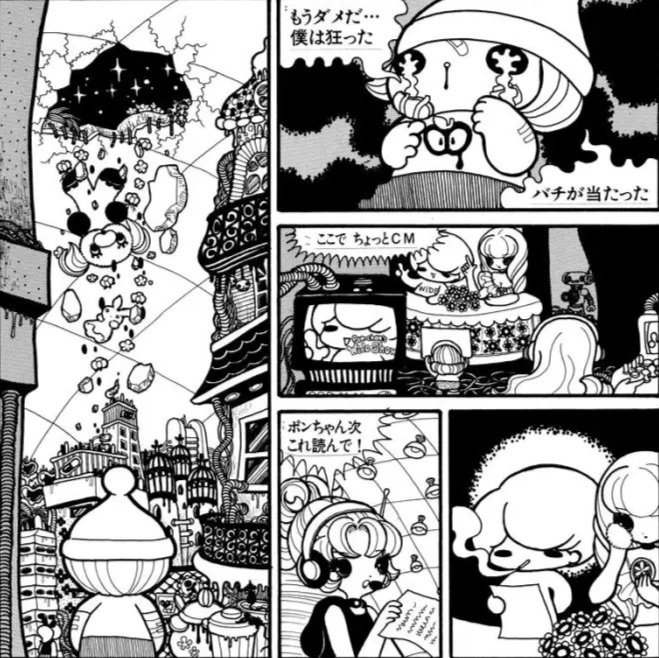
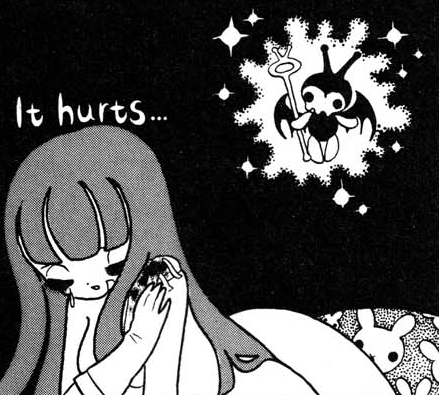
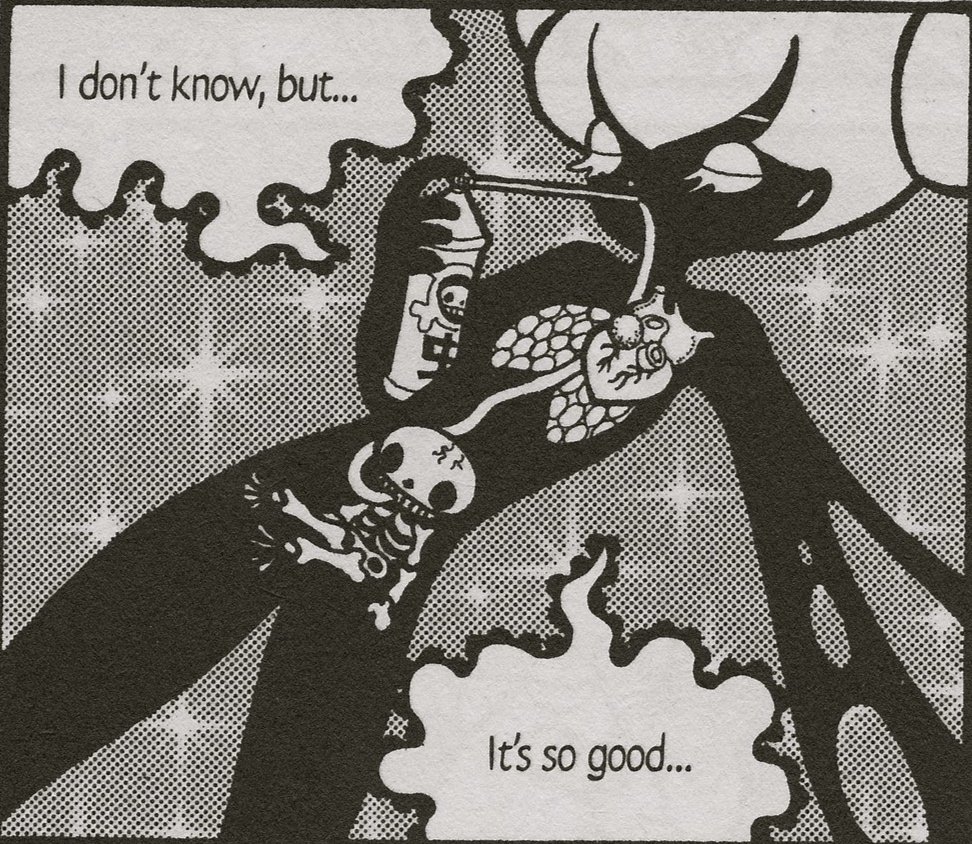
Junko Mizuo is a legend of the underground comics scene which exploded in the 90s, using Harajuku fashion inspired gothic-kawaii style whose sugary sweetness leaves you with a sense of dark unease and raises questions about the consequences of society's excesses.
Fraction by Shintaro Kago
Exploding school girls, bursting at the seams with skeletons, gore, and detached eyeballs in mandala like patterns is what Shintaro Kago, ero-guro’s grandmaster is known for. But aside from his ever-expanding myriad of body horror infused illustrations, his manga are legendary in their own right. If you have the stomach to bear his more gruesome concoctions, Fraction is disgustingly bizarre and one of Kago's more plot driven works, telling the sordid tale of "The Slicing Devil” a serial killer and the seemingly mundane details of his life. Seemingly charming on the outside, Fraction fills in the reader in on his twisted killing methodology down to most minute details, as he lures women to their deaths.
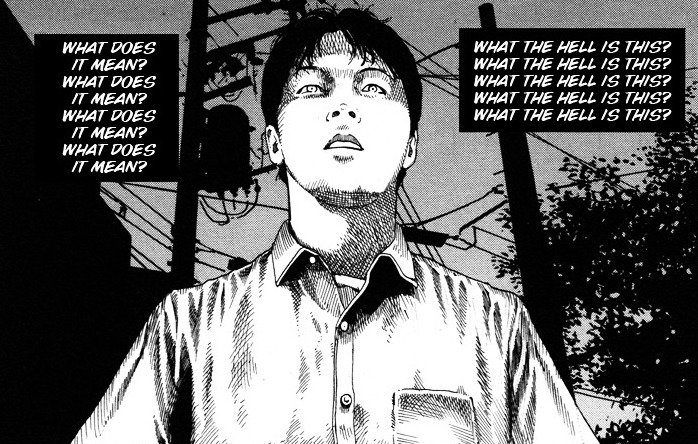
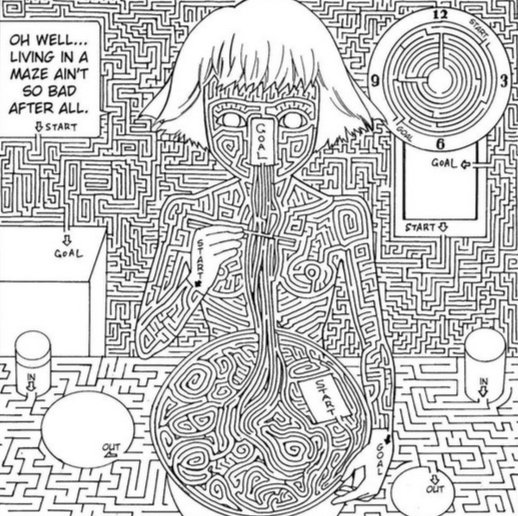
The main narrative chronicling a killers brutal series of massacres is followed by an interview between Kago himself and crime writer Ryuchi Kasumi about real life killings and what draws them into their obsessions with them. The volume finishes with shorter stories that are stomach churning by taking body horror to new extremes. Fraction’s medley of psychological horror mixed with more straightforward blood and brains makes it a favorite for horror fans across the spectrum.
Written by Ora Margolis and Amy Brereton

